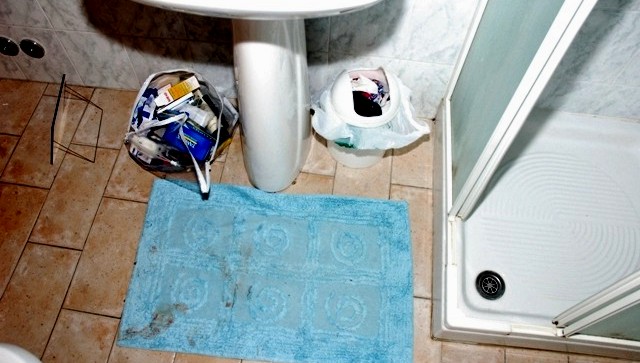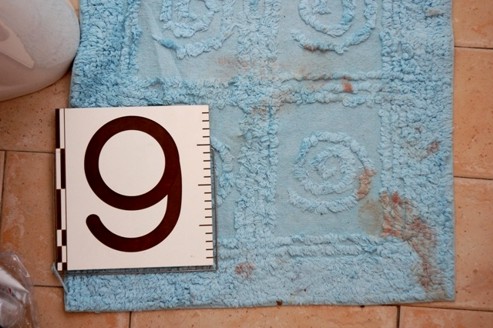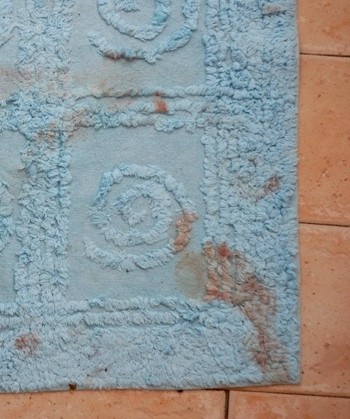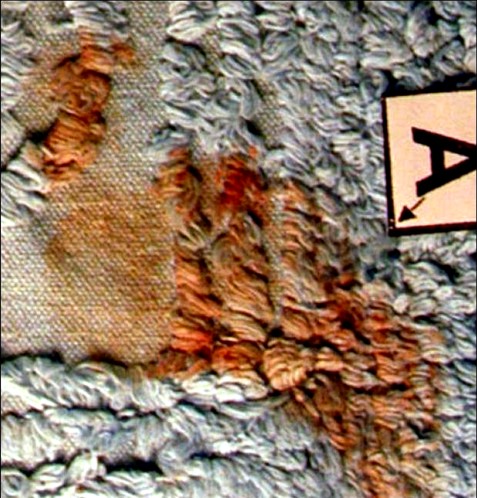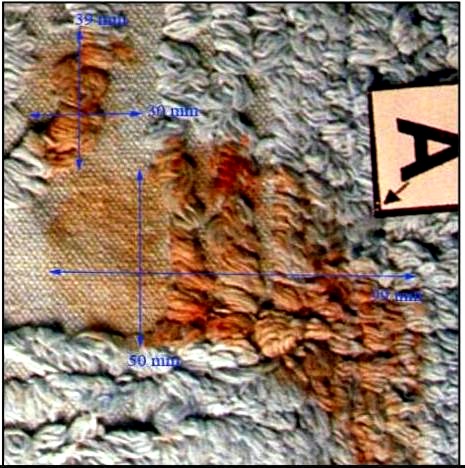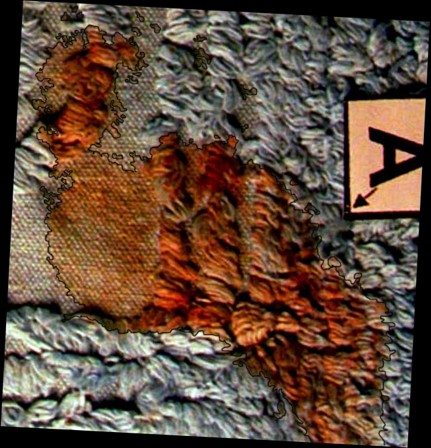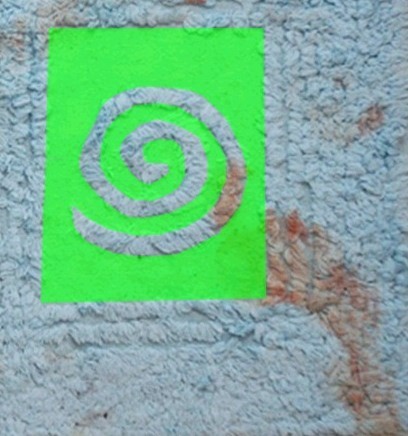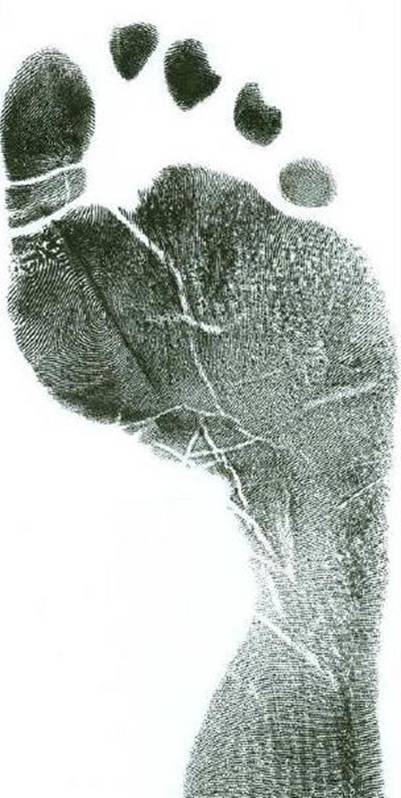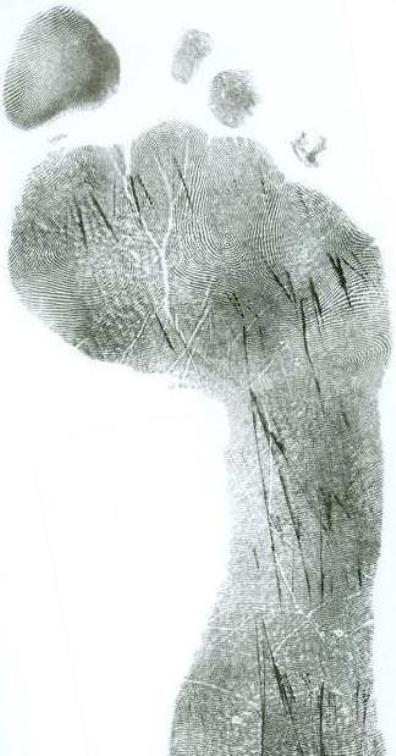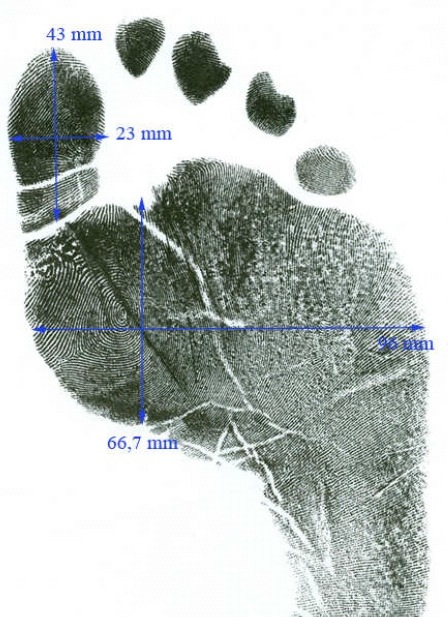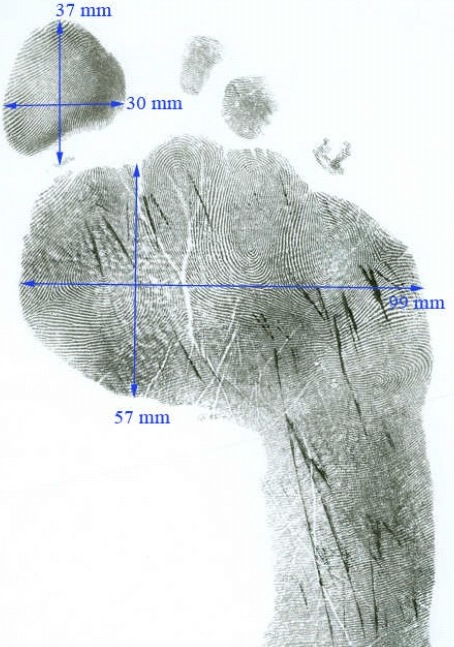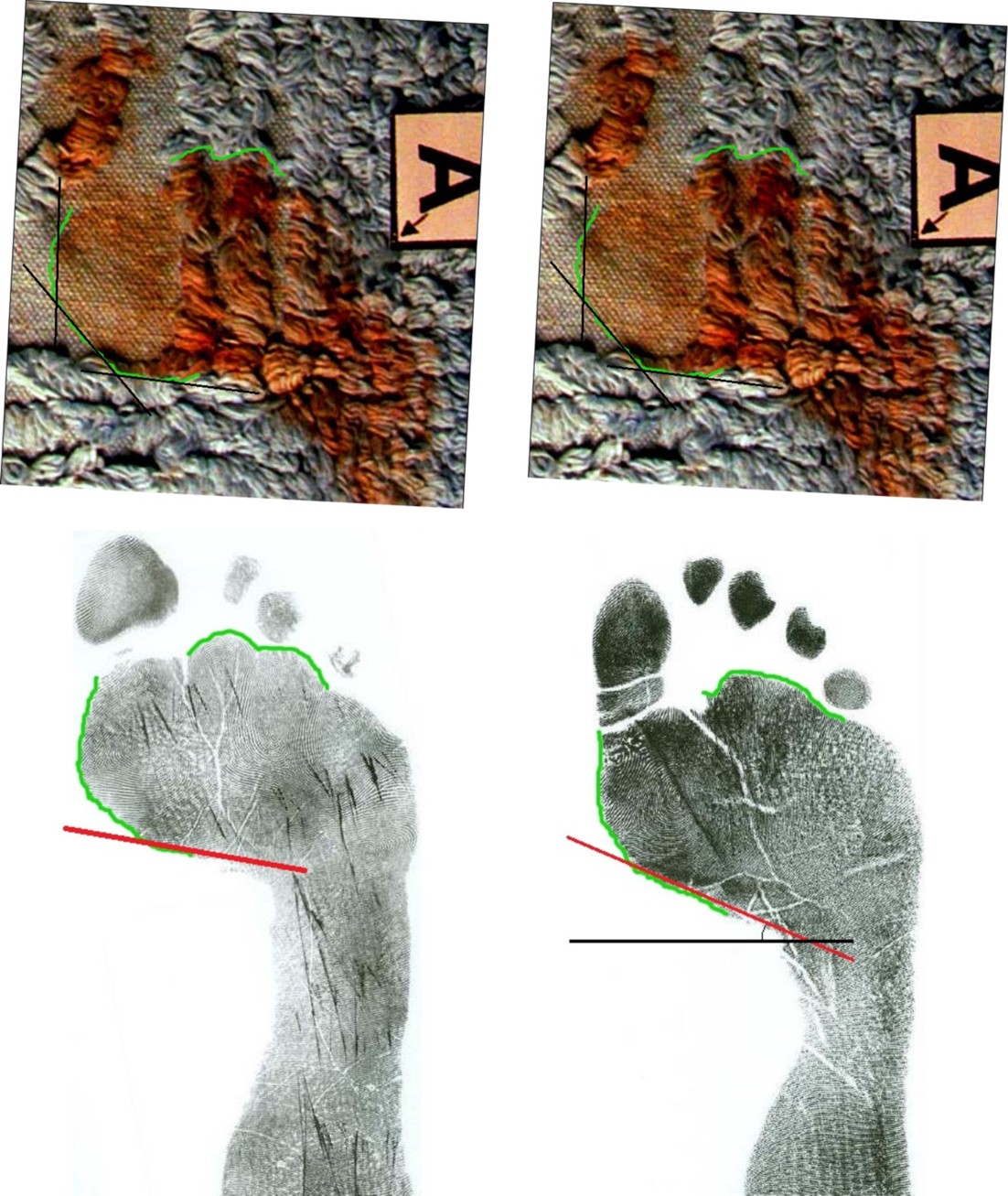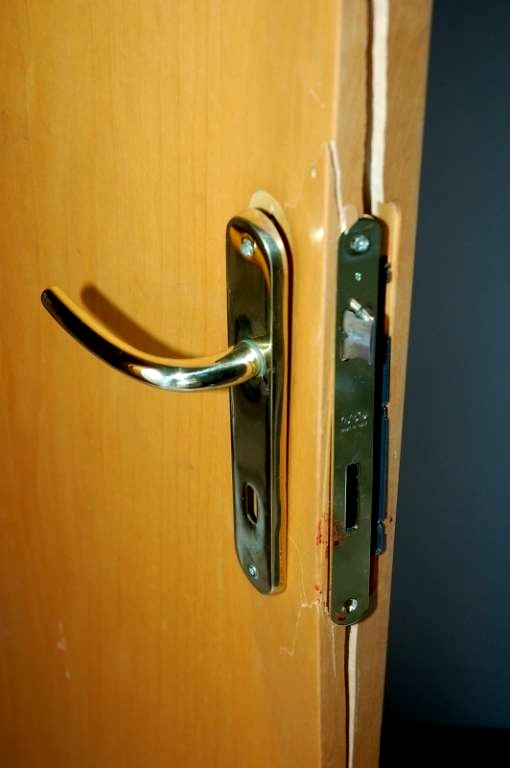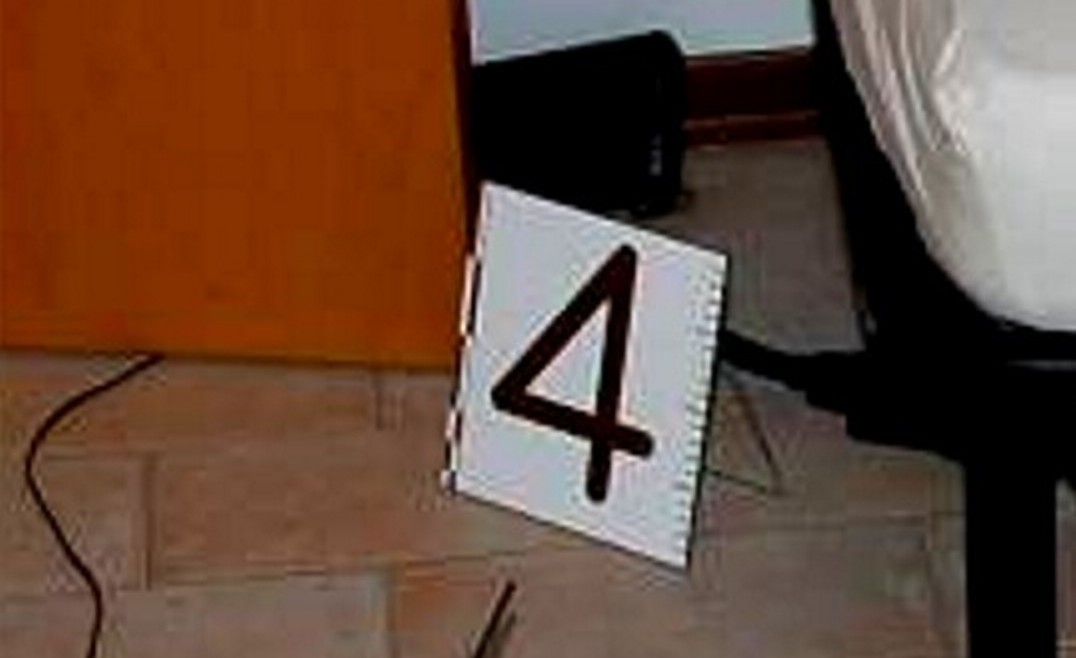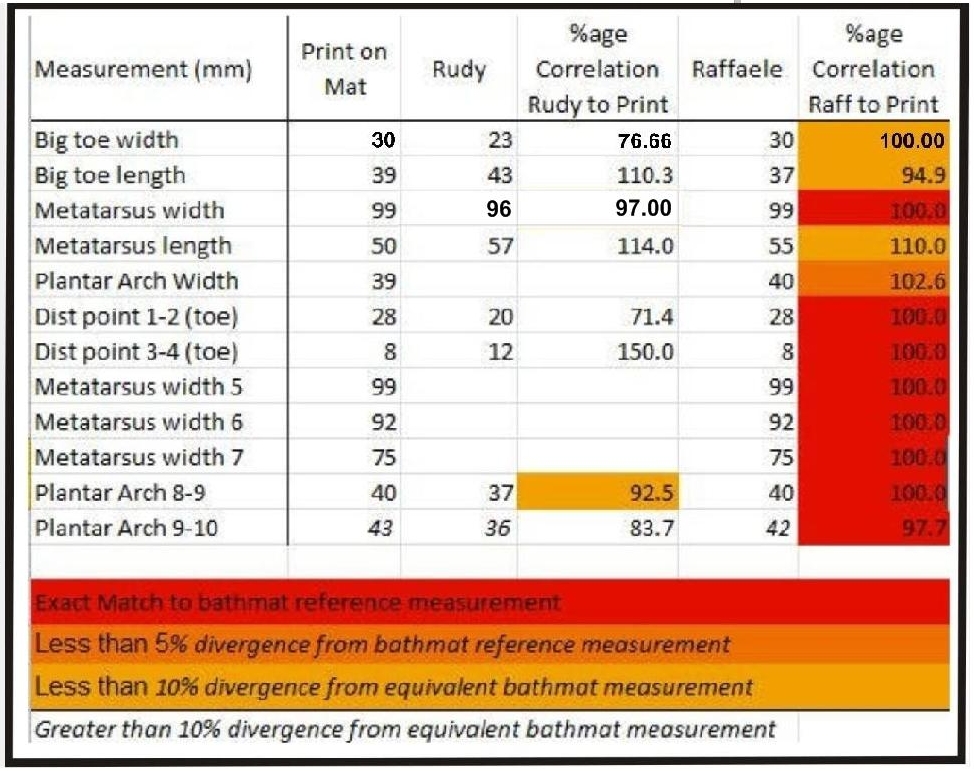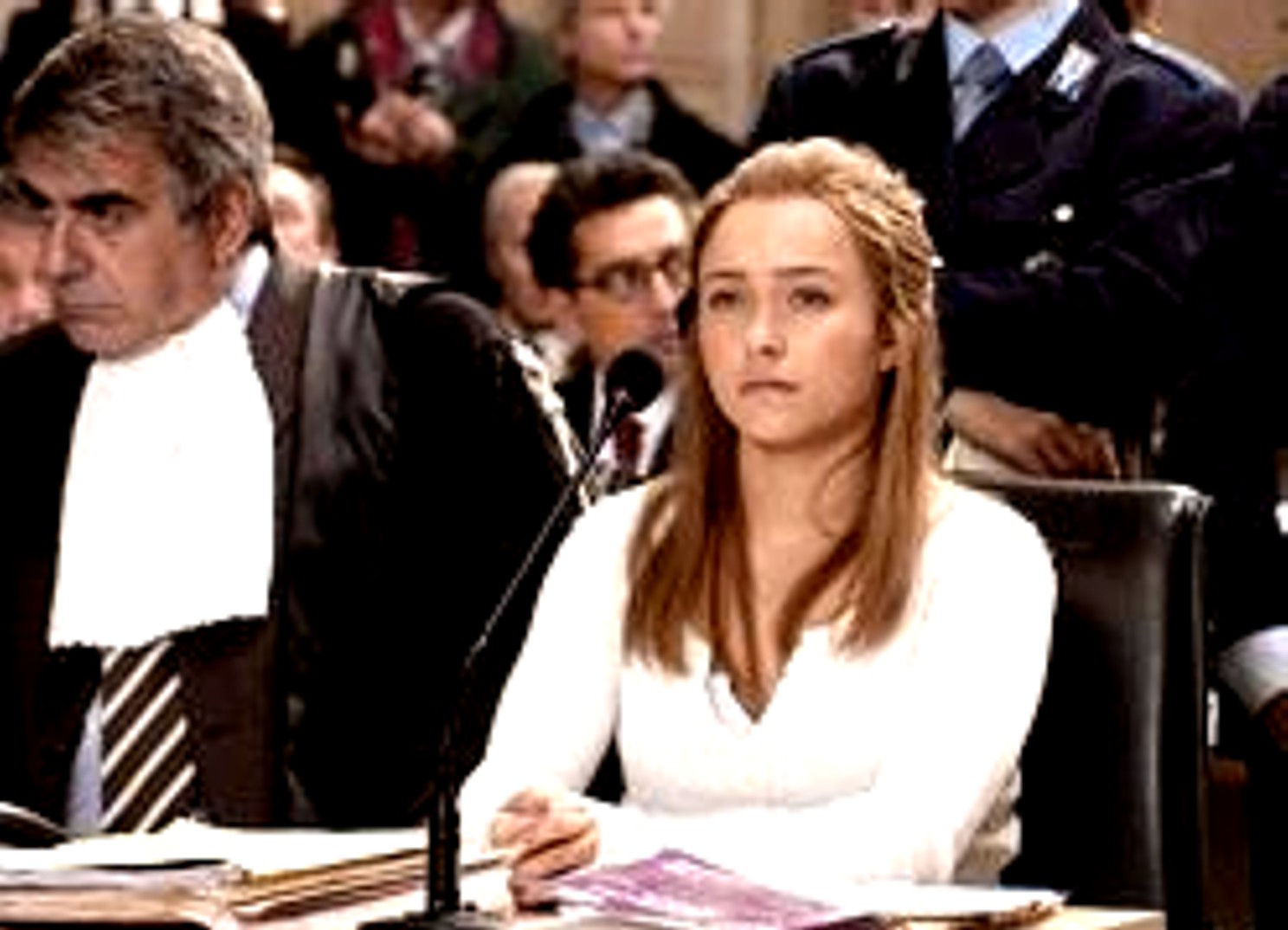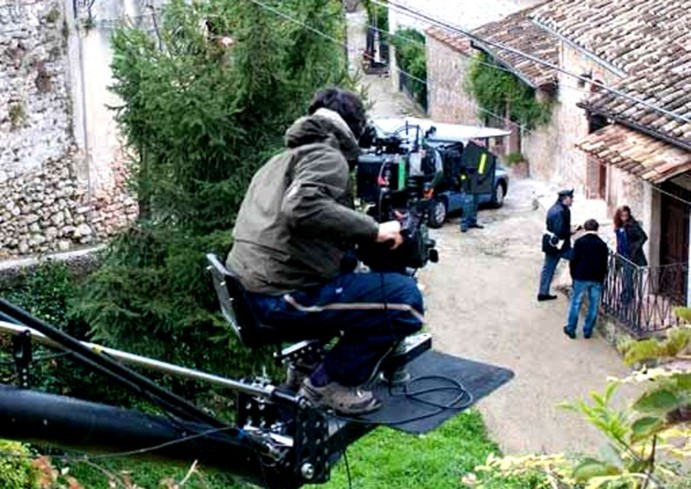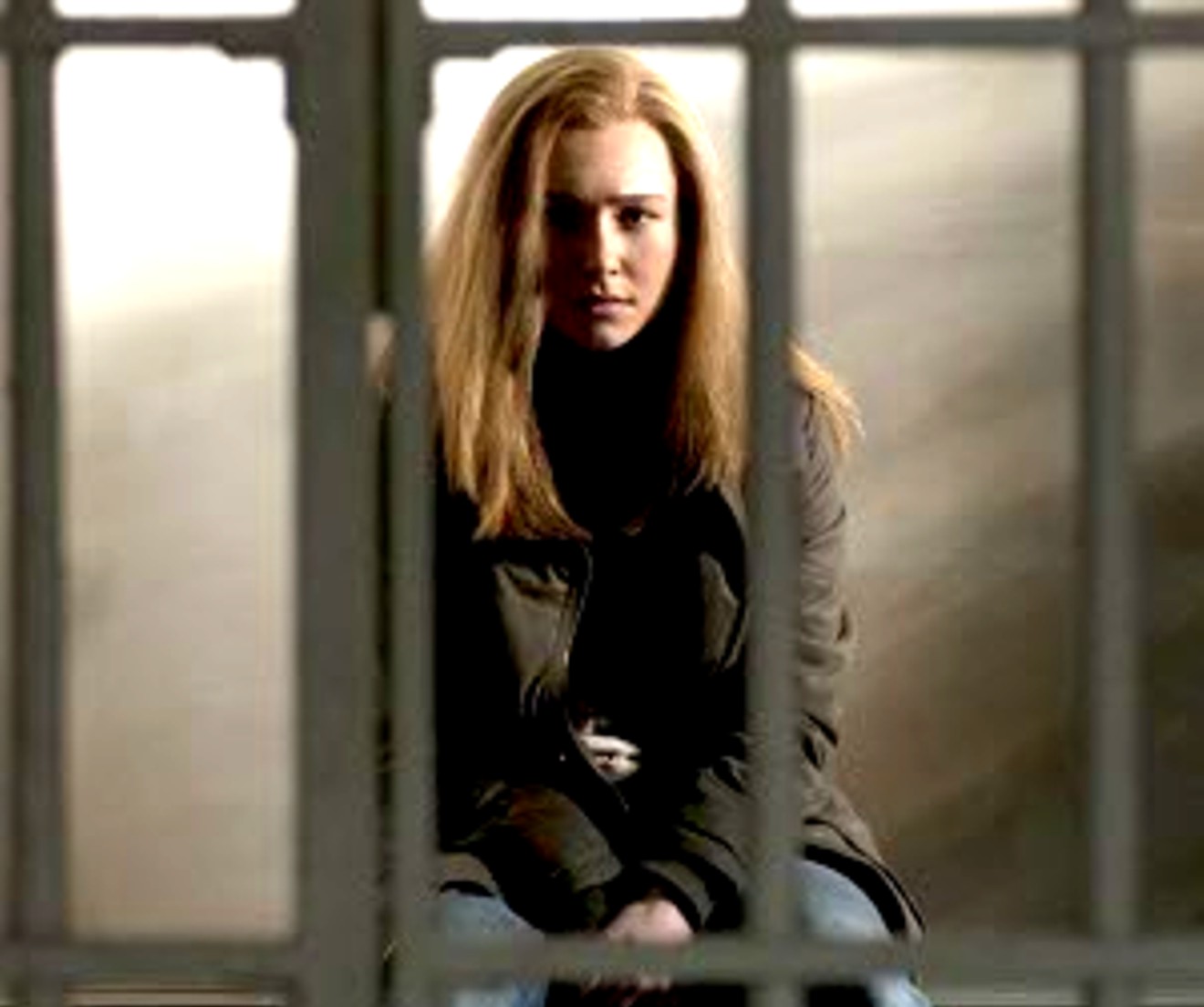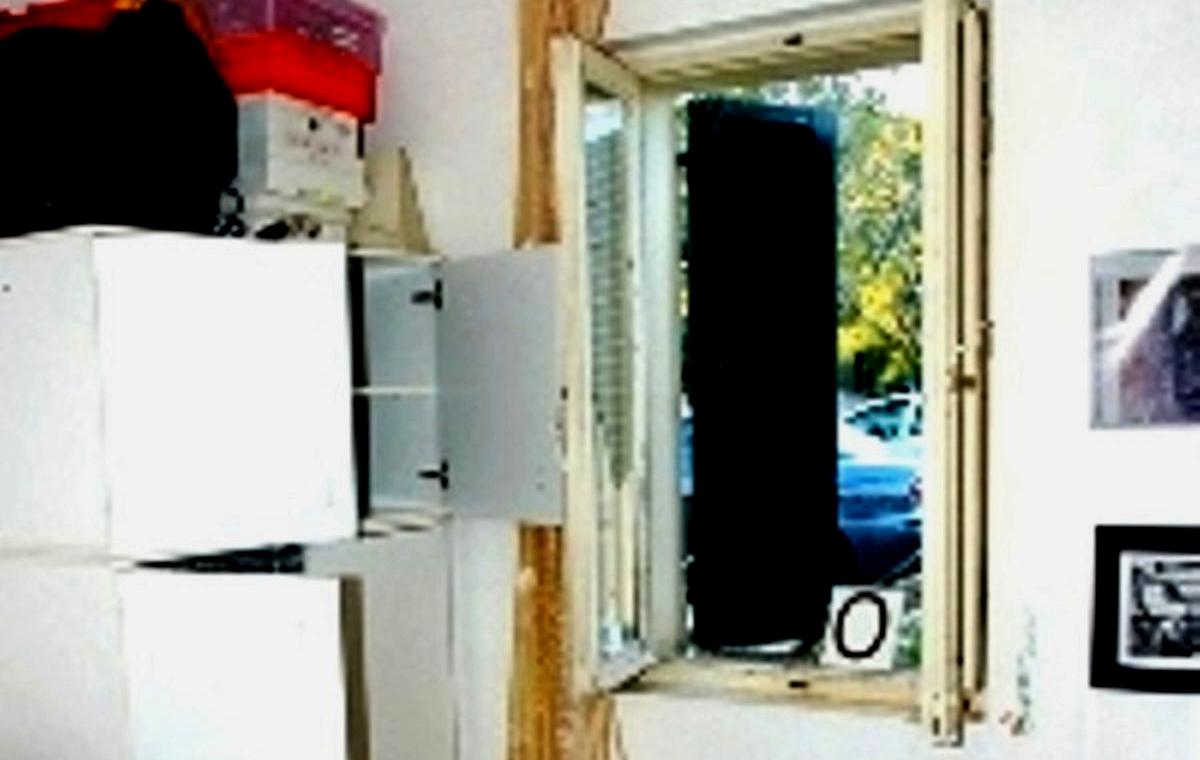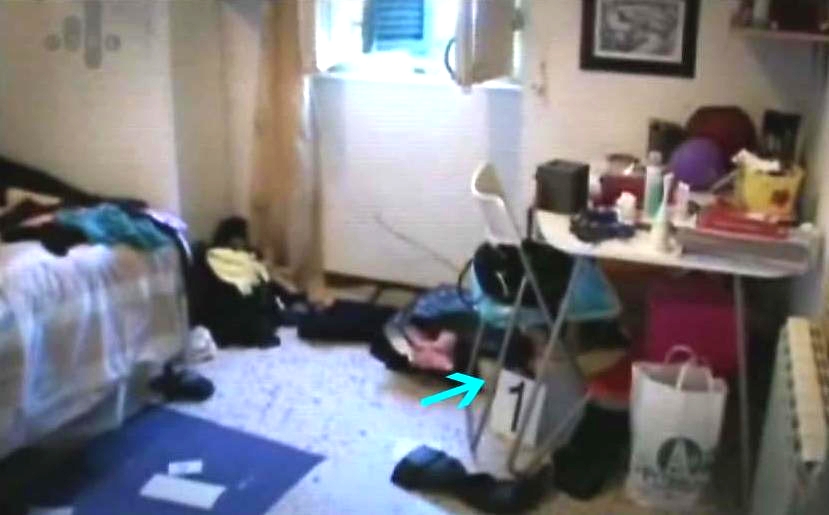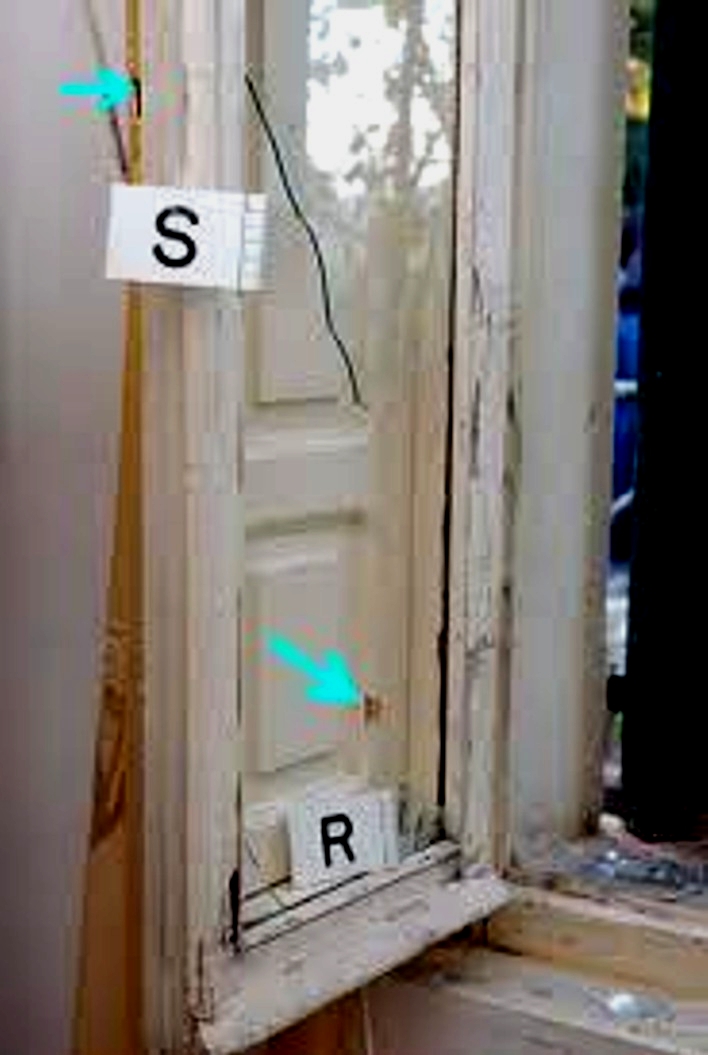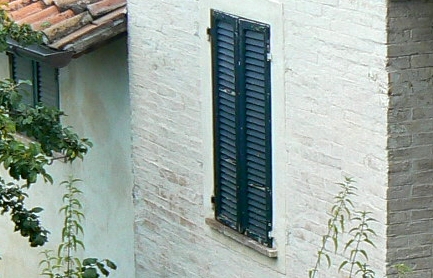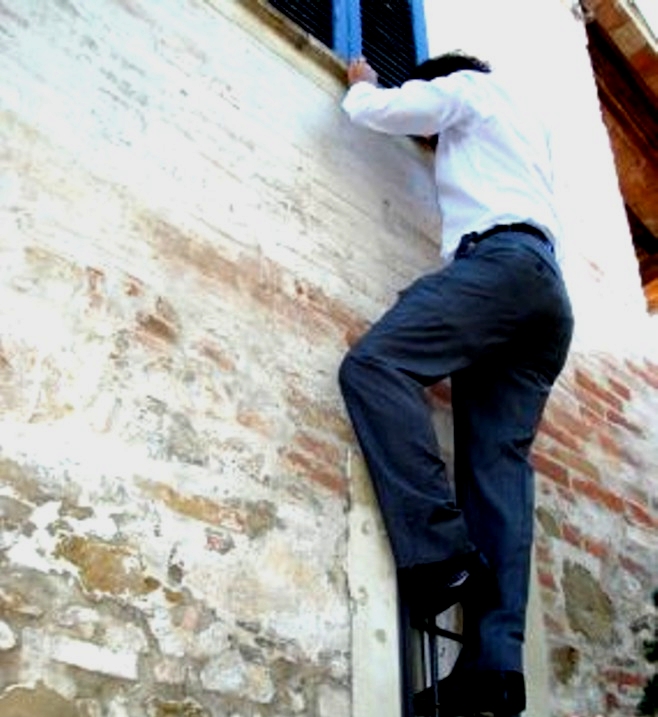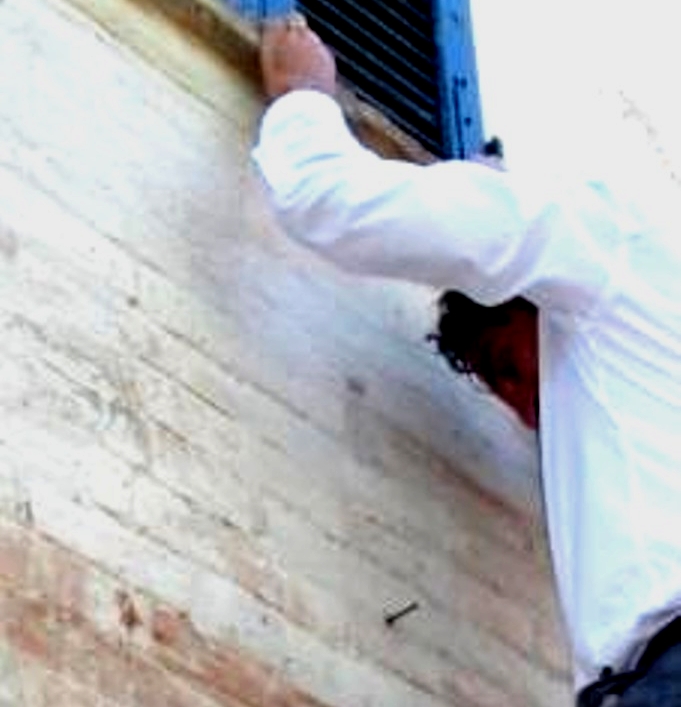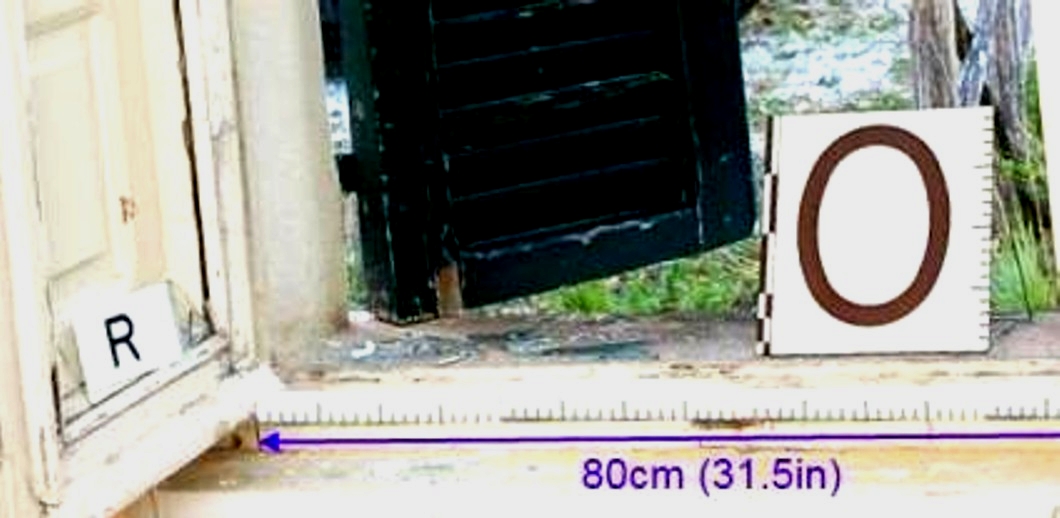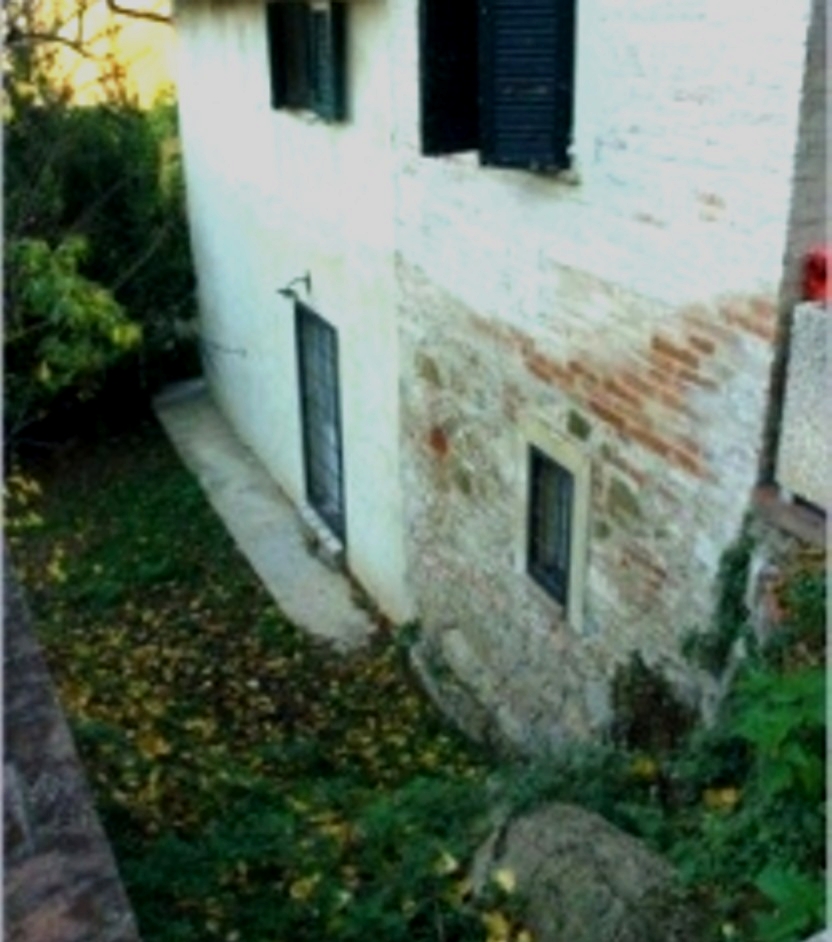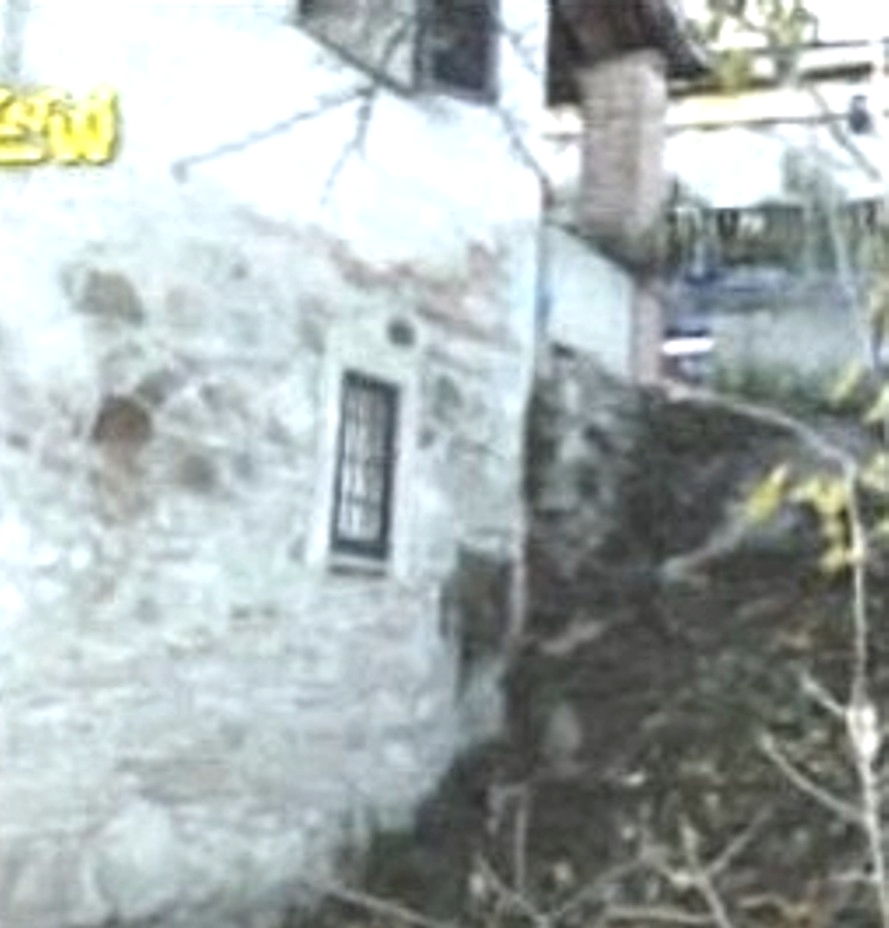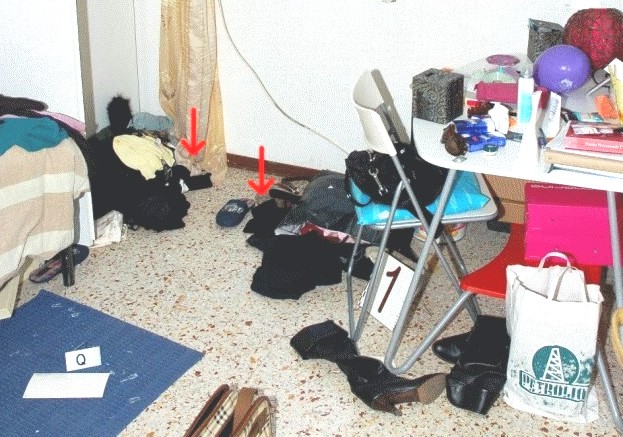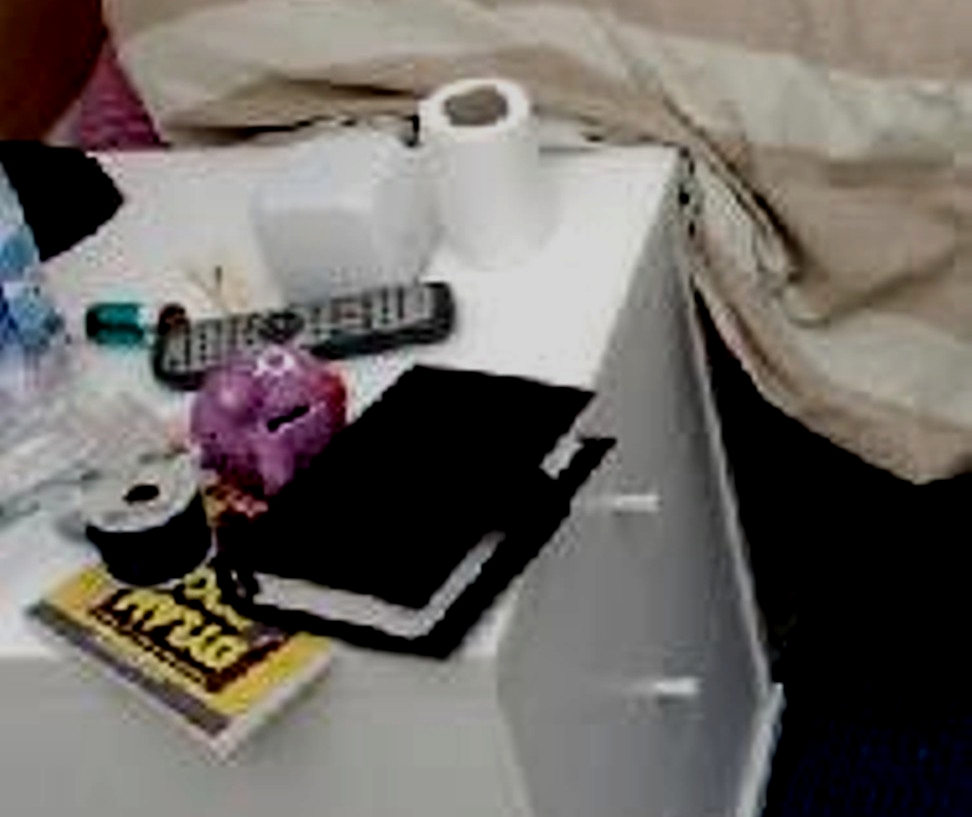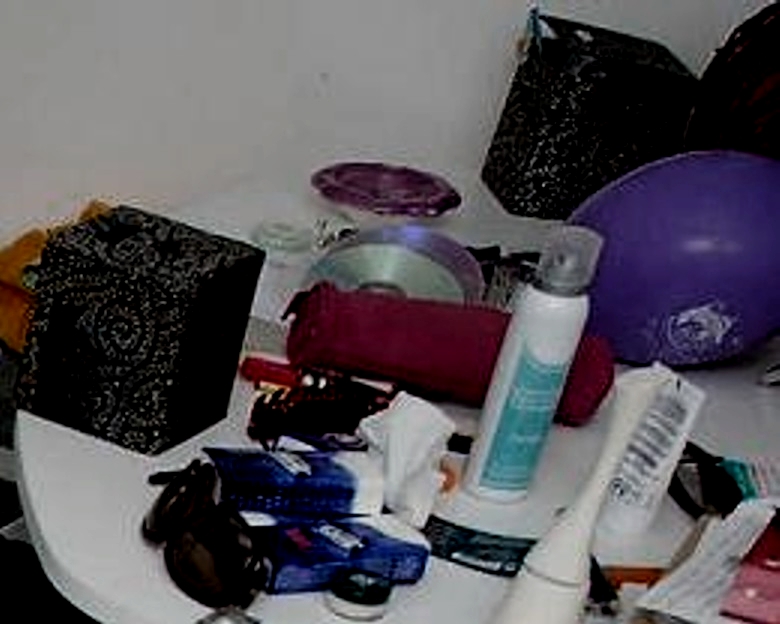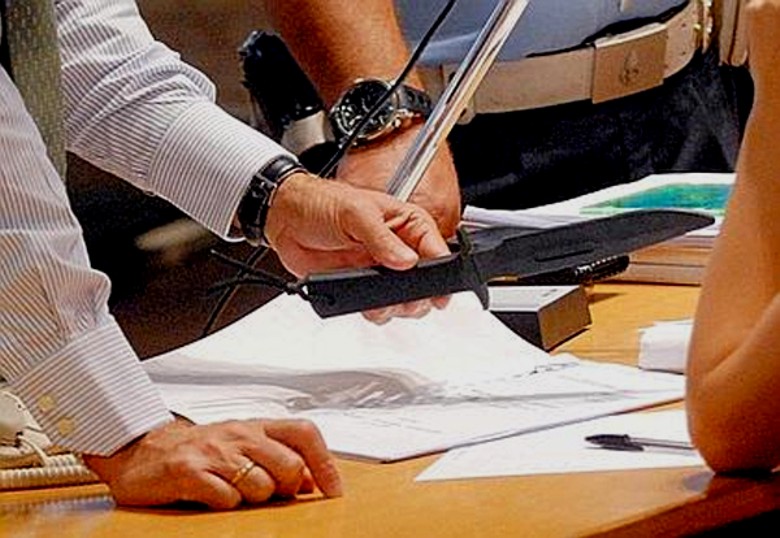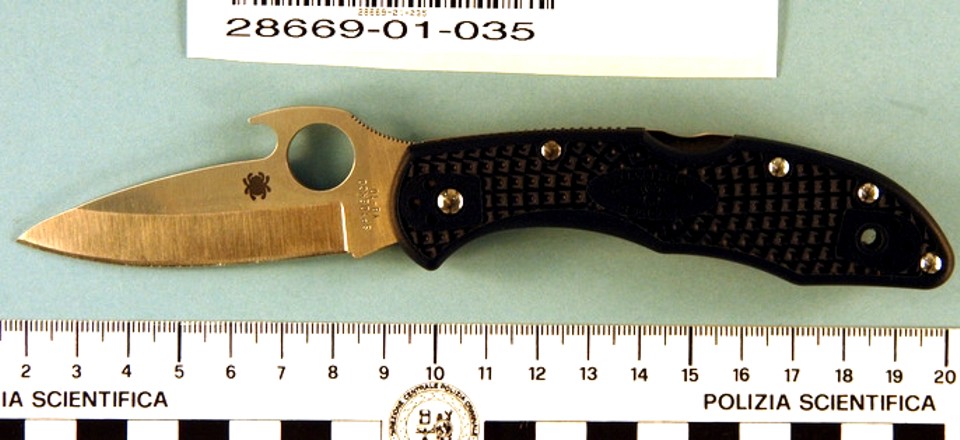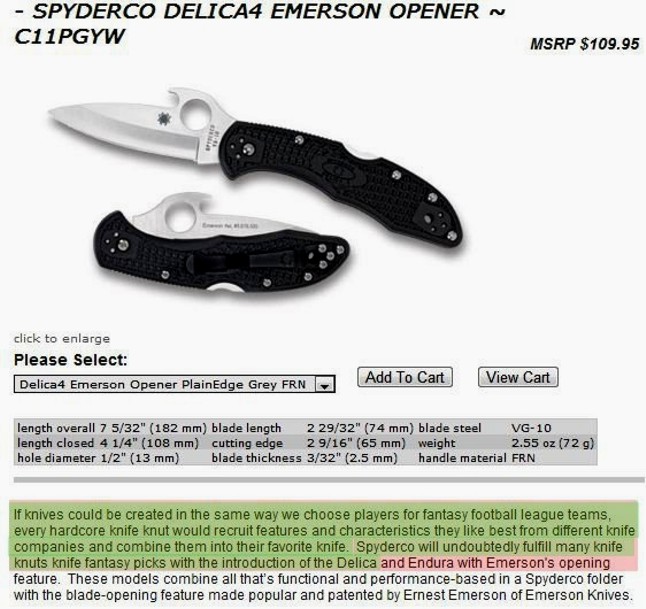
Category: Other physical
Wednesday, April 16, 2014
The Incriminating Bathroom Evidence: Visual Analysis shows the Footprint IS Sollecito’s
Posted by Machiavelli
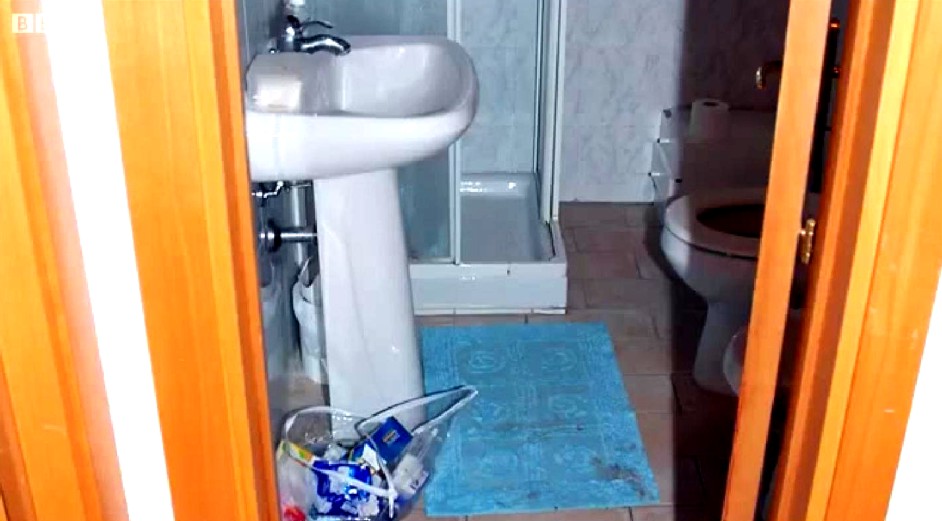
[Please click on each image for a larger and more high-resolution version]
The sheer depth and width of the hard evidence
The defenses really don’t want you to know this: in both width and depth, the full panoply of the evidence against Knox and Sollecito is absolutely overwhelming.
As we remarked in our post below there are far more and far stronger evidence points than UK and US courts normally require for conviction. But only the trial panel of judges observed anything like their full array.
The 2010 Massei Trial Report (which the Nencini Appeal court validated this past January) is a SUMMARY of what was presented to the judges in the courtroom. Those presentations in court were in turn something of a SUMMARY of the hard evidence buried in all the evidence files and the minds of witnesses.
Italian media SUMMARISED for Italians what was to be seen in the courtroom and to be read in the Massei Report. They were barely able to do even summaries for the 1/4 of all the trial hearings that were not open to the media or the public.
UK and US media for the most part didn’t even bother to provide comprehensive summaries (the very fine on-the-spot reportings of Andrea Vogt, Barbie Nadeau and Ann Wise were the main exceptions).
So in effect people in the UK and US attempting to follow the story didnt for the most part receive even a summary of a summary of a summary!
Not one US or UK newspaper or TV network translated the Micheli Report, or the vital Massei Report, or the Supreme Court appeal, or the Supreme Court outcome - only the (mostly professional) translators on PMF dot Org did all that translation.
This post is another example of how far down - beyond even Massei - it’s possible to drill into the evidence, and see it still hold up.
Some past posts on TJMK drilled down to similar depths, on the knives, on the DNA, on the mixed-blood traces, on the phone-events, on the motives and psychologies, and so on. All that evidence too all held up.
Visual analysis of the bathroom-mat footprint
This post mainly consists of high-resolution pictures and measurements. Presented like this, the pictures and measurements largely speak for themselves, and show the real strength of the bathroom-mat footprint evidence.
You will see that as SomeAlibi previously concluded using other methods, this footprint was quite undeniably Sollecito’s. It bears no similarity at all to Rudy Guede’s.
Please click on all images for larger versions in scalable PDF format
1 . [Below] the bathmat and the print, with measurement reference
2 . The bathmat print and the surrounding area
3 . The bathmat print (photo from Polizia Scientifica).
4 . The bathmat print, with vertical and horizontal sizes, from Rinaldi’s report
5. The bathmat print, photo with enhanced contrast.
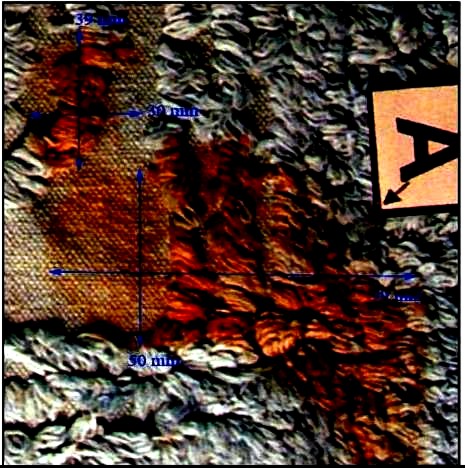
The photo above was modified by highly enhancing contrast.
6 . Enhanced contrast helps to spot some features
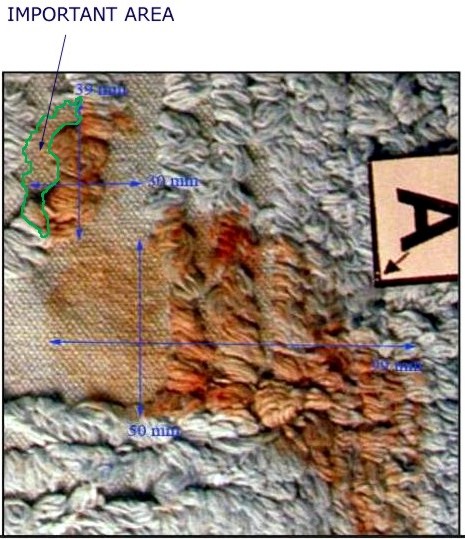
Contrast may help to highlight especially some parts of the print outline.
For example the area on the left labeled as “important area” in the picture (which was “forgotten” in the notorious photo elaborations disseminated by the ‘Friends of Amanda’ group), shows the actual left outline of the “˜big toe’ of the bathmat print.
The toe includes the area indicated in this picture (here the picture is shown again in its original colours).
7. The bathmat, with enhanced contrast
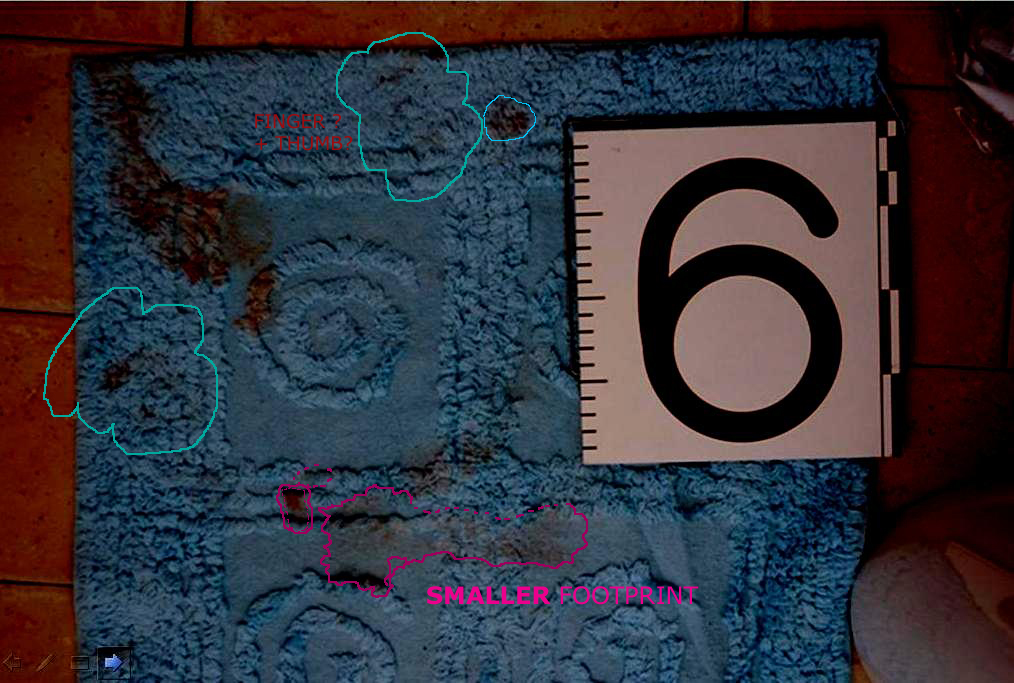
The contrasted image is showing the presence of other stains
There are other stains on the carpet (about another 10, factually situated in one half of the mat area), and also there shows a second diluted footprint (apparently from a foot of smaller size).
8. The selection of a set of red colour shades, outlined by an automatic outline generator
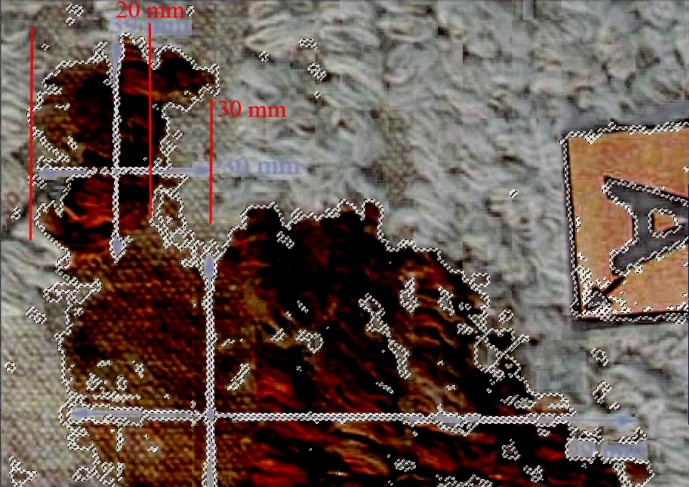
Shows the shape and the possible “˜outline’ of the stain
Reference measurements indicate the width of the “˜big toe’ in millimetres.
9 . A hand drawing of the outline (detail).
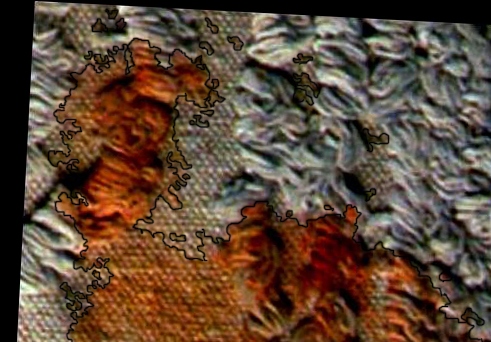
The photography above was modified
The modifications are: +28% contrast, -8% luminosity, + 20% colour saturation, from the original.
An outline has been drawn manually on the photoshop image, trying to be as faithful as possible to the actual stain.
You can notice that, apart from some minor “˜disputable’ very faint areas (such as the area between the toe and the metatarsus) there are only minimal differences between an automatically generated outline and a manually drawn one.
The shapes of the “˜big toe’ are extremely similar in both contours (images 8 and 9), in fact all meaningful features are basically identical.
We consider this manually drawn outline as good for comparison.
10 . The complete hand-drawn outline
11 . Minor detail: small dots separated from the main stain
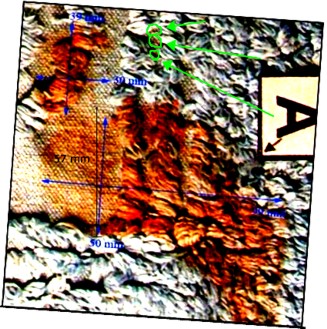
Observe the small red ‘dots’ in the picture above
Although we can’t draw any conclusion about their possible significance, we note the existence of these very small “˜spots’ of a faint red colour shade, separated from the big stain.
They are detected by the computer generated outline above, and that we also see as distinguishable with the naked eye thus we considered them in drawing manually the outline.
We don’t draw any conclusion about them; but because of their sensitive position (they may suggest a “˜small toe’ mark) we take note of them.
The green arrows in the picture point out their position (green circles).
12 . An image in electronically modified colours
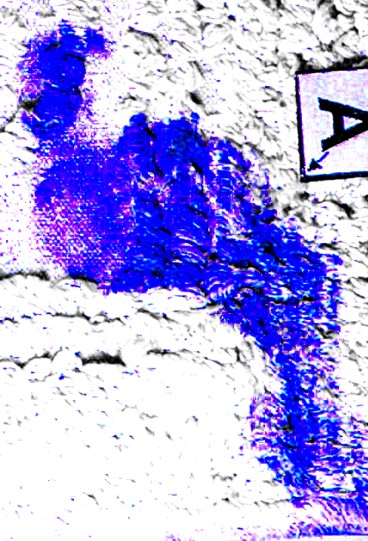
Distribution and intensity of the colouration
As a part of the preliminary study of the stain, we also produced this image above where the computer assigned an artificial colour to an array of shades of ‘red’, thus allowing to further isolate the stain from the background for further assessments about its shape.
This picture shows the distribution and intensity of the colouration. (note: the existence of some above mentioned tiny marks is recorded by this technique too)
13 . The bathmat has a spiral-shaped relief decoration
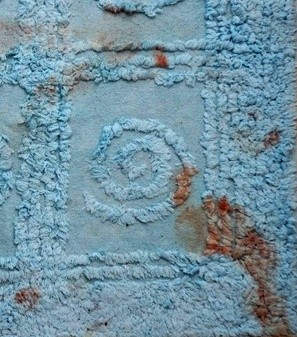
The footprint’s toe obviously balancing on top of the relief decoration.
We think the outline of the “˜toe’ mark of the bloody footprint is affected by the shape of the decoration, in particular the missing part of the toe on the right side, which is remarkably coincident with the margin of the decoration.
So that on that side there is a striking correspondence between the outline of the “˜negative area’ ““ the fabric surface around the spiral, which is lower ““ and the big toe’s outline
This indicates that the outline of that mark on that side was affected by the decoration margin, thus the print there has a “˜missing part’. So the “˜crooked’ bloody area in fact follows the margin of a larger toe.
Because of such coincidence, we can logically assume that the actual shape of the big toe mark appears to be part of a big toe, with larger surface which left its print only partly because part of its surface did not have contact with the fabric, in correspondence of the “˜negative area’.
14. The “negative area”
15. Mat decoration in relief and the toe mark
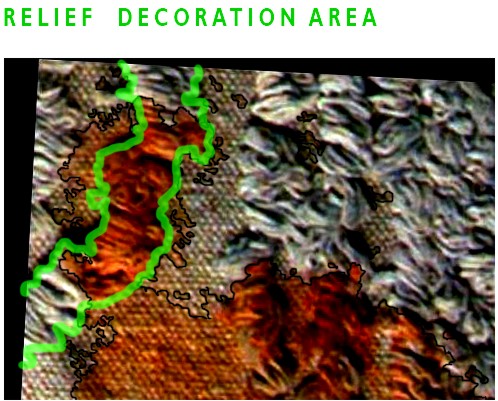
Observe above one single, unitary stain
The remarkable coincidence between the outlines of the decoration in relief and of the toe mark is shown in the picture above.
The rough contour of the print obtained through a smooth curve highlights the shape of the big toe.
Part of the relief decoration outline coincides with the toe mark outline, which shows, highlights and explains how all parts of the red toe mark, that you can see left of the relief decoration, they all belong to one single, unitary stain.
Thus we can deduce that the “missing” area on the right of the toe is determined by the decoration, and coincides with the negative area.
16. Picture (by Kermit) showing a rough shape of the stain
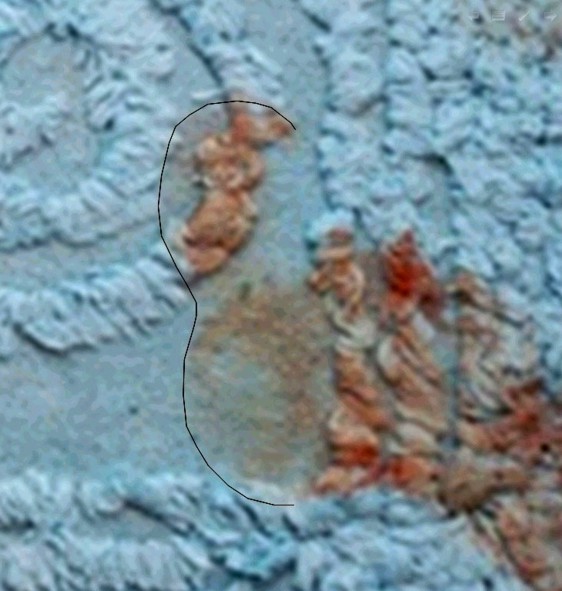
Observe shape, curvature and size
This drawing by Kermit above highlights the rough shape, curvature of left margin and overall size of the big toe.
17. Rudy Guede’s sample print
A copy of this picture together with one of Sollecito’s print at the same scale will be used for comparisons.
18 . Raffaele Sollecito’s sample print
A copy of this picture together with one of Guede’s print at the same scale will be used for comparisons.
19. Part of Rudy Guede’s sample print with Rinaldi’s reference measurements
20. Part of Sollecito’s sample print, with Rinaldi’s reference measurements:
21. Bringing all photographs down to the same scale
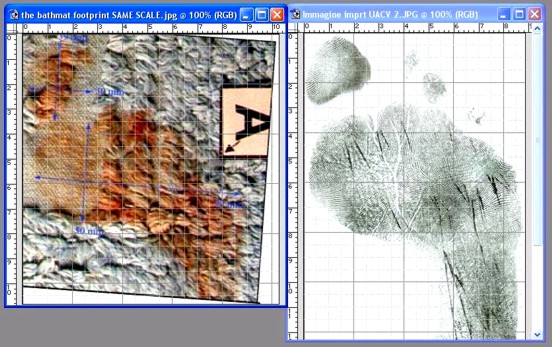
An accurate exercise of scaling was done
This was based on Rinaldi’s referenced pictures. Each one of the Rinaldi’s sample pictures has multiple measurements on several points of reference which allow a high precision determination of their scale and sizes, and thus comparison at the same scale.
In order to further increase scaling precision, the scale was calculated previously and separately for each comparative measurement in the three photos; this was done multiple times for each measurement and the average was picked in order to reduce error as for statistical measurement method.
The resulting final error in the scale is extremely small, far below a threshold of significance that could affect comparison (which was set arbitrarily at 1%, but it’s probably significantly higher, while the actual error is much lower).
In other words, the scale error that may affect your screen pictures will be definitely smaller than any possible perceivable (either significant or tolerated) difference that would be noticed or that may affect the attribution of the stain, when this is compared to the sample.
22. The hand drawn outline is shown again here
23 . The outline (matched scale) overlapped on Sollecito’s sample footprint
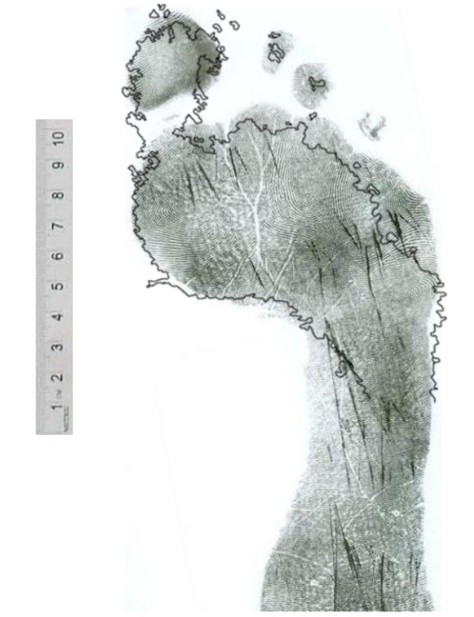
The array of compatibilities with Sollecito
The bathmat stain does not seem to have major incompatibilities with Sollecito’s print; it shows rather an array of compatibilities that can be perceived visually.
One interesting feature is the shape, size and position of a ‘big toe’, that appears as a remarkable coincidence; the toe also has a kind of cleft (see 28 below) on the curvature of its left margin. Another outstanding coincidence is the curvature of the plantar arch on the left.
24 . The same outline overlapped on Guede’s footprint
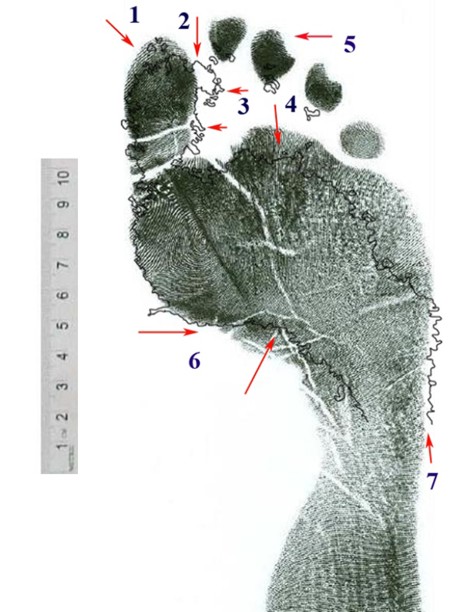
Compare with Guede’s - matched scale.
If you look at the overlapping of the stain outline (see pic 22.) with the sample of Guede’s print (see pics 17. 19.), you may notice 7 major differences, showing a failure of compatibility. Those differences are indicated by numbers (1-7) in the picture .
Each one indicates an area of major difference between the outline of the bathmat stain and the outline of Guede’s sample print. Those measurement differences are remarkably larger than those that can be detected on the overlapping with Sollecito’s sample print.
On the other hand, the compatibility between Sollecito’s print and some very peculiar aspects of the bathmat print (such as a 30mm wide and short toe) were absolutely remarkable.
The differences between the bathmat stain and Guede’s print are :
1) Toe mark of stain is significantly SHORTER than the big toe in Guede’s sample print (a difference of about 7 millimetres). Some people may want to attempt an objection, by suggesting that such a difference may be just a consequence of the position chosen for the overlapping, that maybe the bathmat print was just positioned too low in the picture, the problem may be solved by shifting it up about 7 millimeters so as to make the tip of the bathmat toe ‘coincide’ with the tip of Guede’s print toe.
However, such objection wouldn’t work; it’s a wrong argument. In fact the only possibly correct position for overlapping the bathmat stain outline is determined by the left curvature of the ball of feet and plantar arch (the area of the picture near number 6), which is by the way the most clearly outlined part of the bathmat stain. If you shift the bathmat stain upwards, the outline will miss the match with the curvature of the left margin of the ball of the feet. You will notice that the plantar arch in this area is already very incompatible with Guede’s plantar arch. It tends to become even more incompatible the more you shift the bathmat stain outline towards the toe.
The problem has no solution, since the more you shift the stain outline upwards (in the direction of the toe) in an attempt to make it look more ‘compatible’ with the length of Guede’s toe (or with an upper margin) the more it will become incompatible with the plantar arch. In order to limit the incompatibility of the plantar arch, and in order to keep an overlapping of at least the left margin of the ball of the feet, you need to place it as shown in the picture, this is the position of ‘maximum’ compatibility between the bathmat stain and Guede’s print. Conclusion: the bathmat toe is too short.
2) Toe mark of stain is TOO WIDE (30 mm). It is much wider (30 mm) than Guede’s toe. The number 2. indicates the protruding mark at the upper right, the mark which Giulia Bongiorno desperately insisted on calling a “second toe” mark. In fact, not only would the mark miss completely any hypothetical Guede’s ‘second toe’ in any possible position of the print; also you may notice (highlighted by pics 8. and 9.) how it is not a “mark” itself, but actually it just part of the same area which is entirely continuous in shape and coloration with the rest of the toe mark, and - the most remarkable feature - its right outline is coincident with the outline of the spiral-shaped relief decoration, so that you can reasonably conclude that it is determined by that (the missing area at the lower right of the ‘big toe’ is determined by the existence of the “negative area” of the bathmat decoration).
Conclusion: the bathmat stain has a wider toe mark, however one likes to call it (“big toe”, or “big toe + second toe”) that fails to match any possible part of Guede’s print. The bathmat print is clearly different and incompatible with Guede’s print. It simply cannot be overlapped to any part of Guede’s sample print. Such area is a very significant difference that points outright to incompatibility between the stain and Guede’s print.
3) The toe mark is larger also in the area located at the lower portion of the toe. The toe of the bathmat print in fact has a ‘right margin’ which actually has some additional small marks, small drops protruding towards the right, like droplets maybe produced by the wet cotton fibres of the part in relief which protrude towards the right. This tends to suggest the toe area of the stain may in fact be considered wider: the object that produced it was definitely wider than 22mm, in this area of the toe as well. So also a look at this area confirms that the bathmat stain is wider than 22-23 mm (more towards 30 mm) not just when measured at the upper corner (number 2.) but also at its “lower” parts; here, the small marks caused by the liquid suggest that a larger surface has squeezed liquid from some fabric threads leaving some trace also on the lower area.
4) Bigger incompatibility of Guede on the metatarsus front outline. This area is the front outline of metatarsus: the stain is almost 1cm shorter than Guede’s metatarsus. This happens when you chose the overlapping so as to make the left outline and plantar arch (6.) of metatarsus coincide, as in the picture. Sollecito’s sample print also shows some difference from the stain in this area (pic. 23.) but the difference between the stain and Sollecito’s print is significantly smaller than what you can see in Guede’s print.
5) There are NO SMALL TOES in the bathmat stain. Small toes are completely absent from the bathmat stain (while the tiny blood marks around the stain don’t coincide with their expected position if it was Guede’s print). Such lack of small toes is a peculiarity of the bathmat print. This is a remarkable difference from Guede’s print, and at the same time, a considerable analogy with Sollecito’s print. In fact one outstanding feature of Guede’s print is the evidence that Guede places a big load of weight on his small toes while instead Sollecito has a posture with a weight distribution with the contrary tendency, and obviously he almost does not touch the ground with his small toes.
Thus, Guede’s small toes are all very well pressed on the ground and thus, we can reasonably infer they are somehow naturally likely to get wet if he steps on any wet surface, and anyway they should get wet for sure if the foot is immersed in water or washed (the foot that left the bathmat print must have been immersed in bloody water). The murderer supposedly washed his foot then stepped on the bathmat. In order to attribute the print to Guede we should assume that Guede “forgot” to touch the carpet with his small toes (while instead he puts a lot of weight on them) or that he managed to not rinse them.
6) The outline of the stain has a PLANTAR ARCH that COINCIDES, by curvature and angle, with the plantar arch in Sollecito’s print, while instead it is very different from the plantar arch of Guede’s print.
7) The stain is larger than Guede’s print metatarsus as visible in the right area of the stain. The difference is rather significant, almost half a centimetre, that is bigger than the difference with Sollecito’s print which instead coincides for a trait. This difference cannot be “solved” in any way since, even if one wanted to claim that the scale is wrong and that the stain should be sized down, this would make the toe, already too short (as in 1.) become even shorter.
If instead the toe length is adjusted the metatarsus becomes even less compatible with Guede. We recall that Massei found that Guede’s feet had a print overall more slender than Sollecito’s.
25 . Other features:
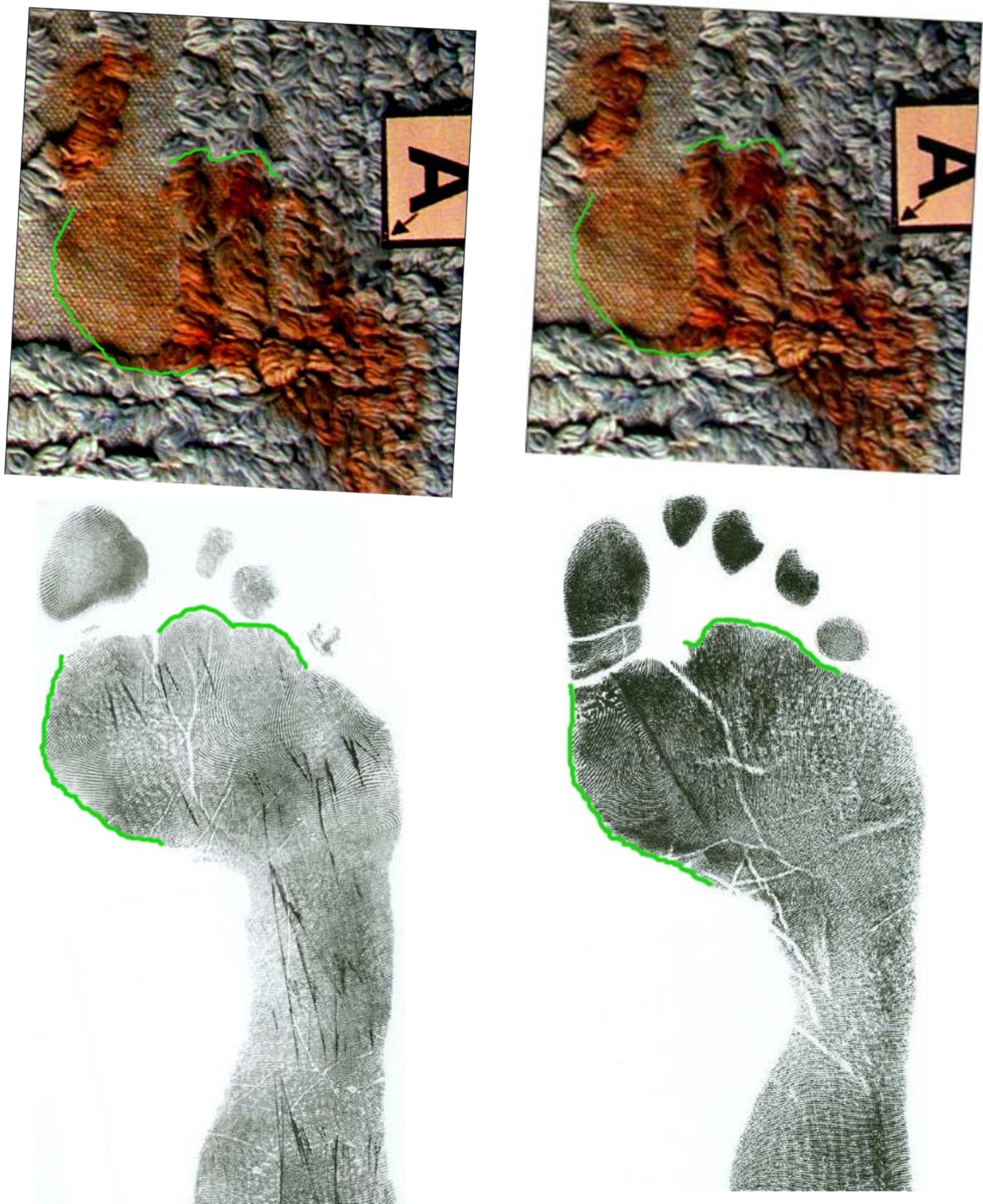
Curvatures of plantar arch are very different
The plantar arch curvature, highlighted in two different drawings (the second highlights also the upper outline “hunches”); the plantar arches in the two sample prints of Sollecito and Guede are shown below. The curvatures of plantar arch are very different.
26. The outline curvature generates different angles
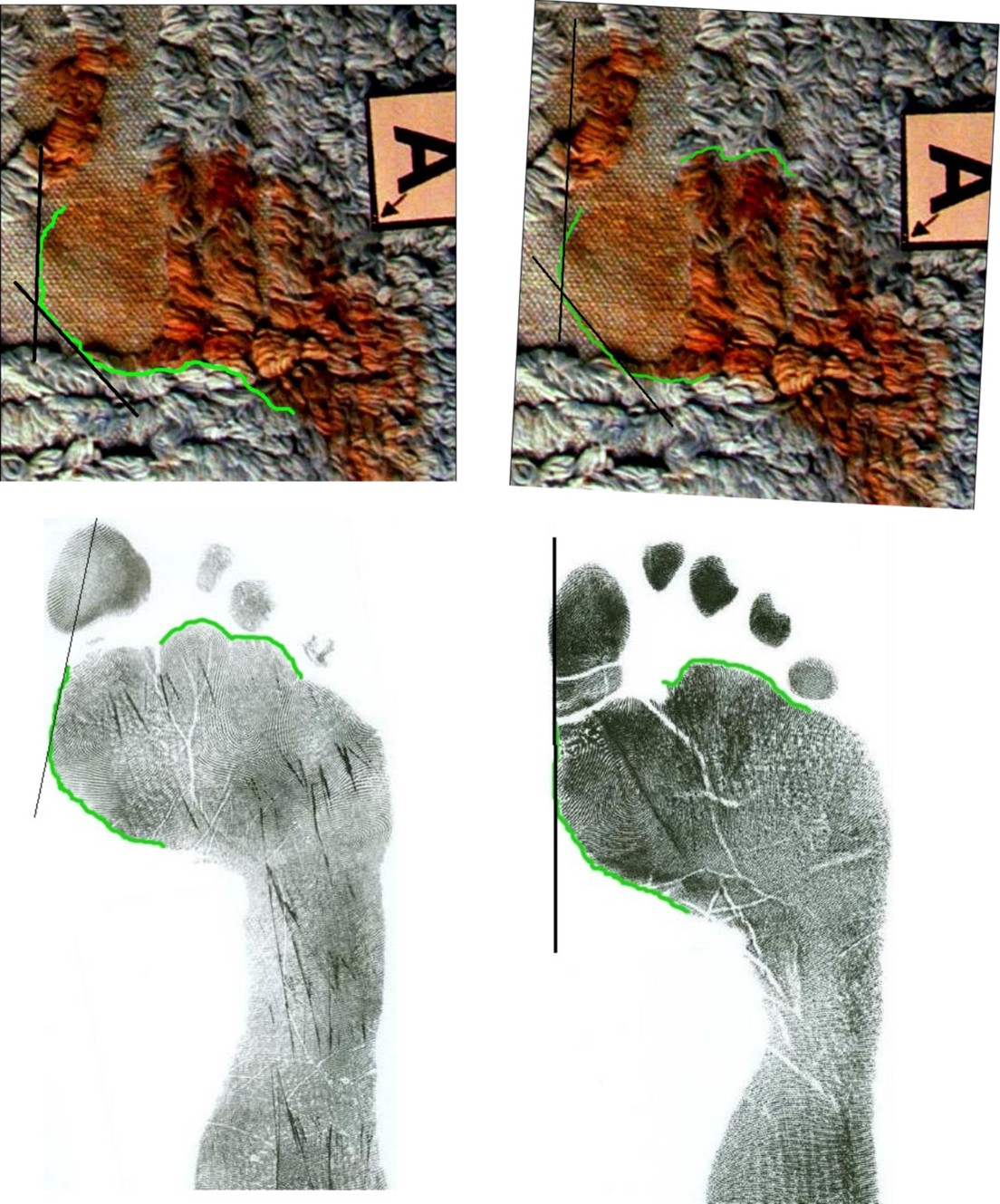
Sollecito’s and Guede’s plantar arch curvatures have very different angles. Also the left outline of metatarsus maintains a different curvature. Sollecito’s outline has an angle (see outline tangent) intersecting the toe (the metatarsus has a “bunion”); in Guede’s print there is basically no intersection, the outline and the toe form almost a straight line.
27 . Plantar arch curvature angle differs between Sollecito and Guede
If you consider the vertical axis of the sample footprint, and its orthogonal line, you may notice how the plantar arch curvatures of the two prints accomplish different angles: the two angles are VERY different, not just three or four degrees.
The (too) narrow angle of Sollecito’s plantar arch probably has a relation with the protruding outline and angle seen in pic 26., and seems related to a hallux valgus (which Guede does not have).
28 . The “cleft” on the left side of the stain
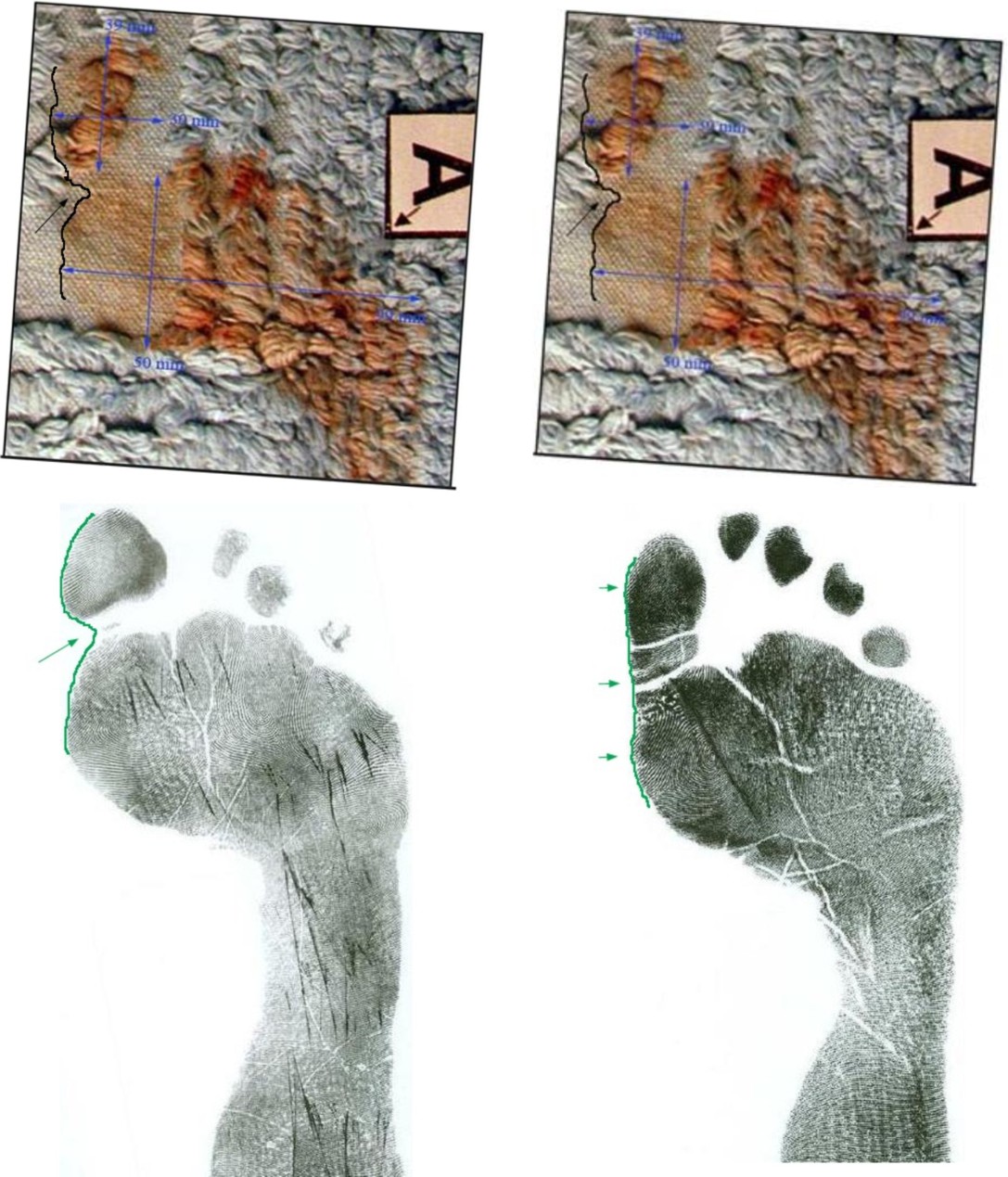
The “cleft” on the left side
This has a correspondence with one sample print, not so with the other.
29 . Table of metric comparison (by SomeAlibi)
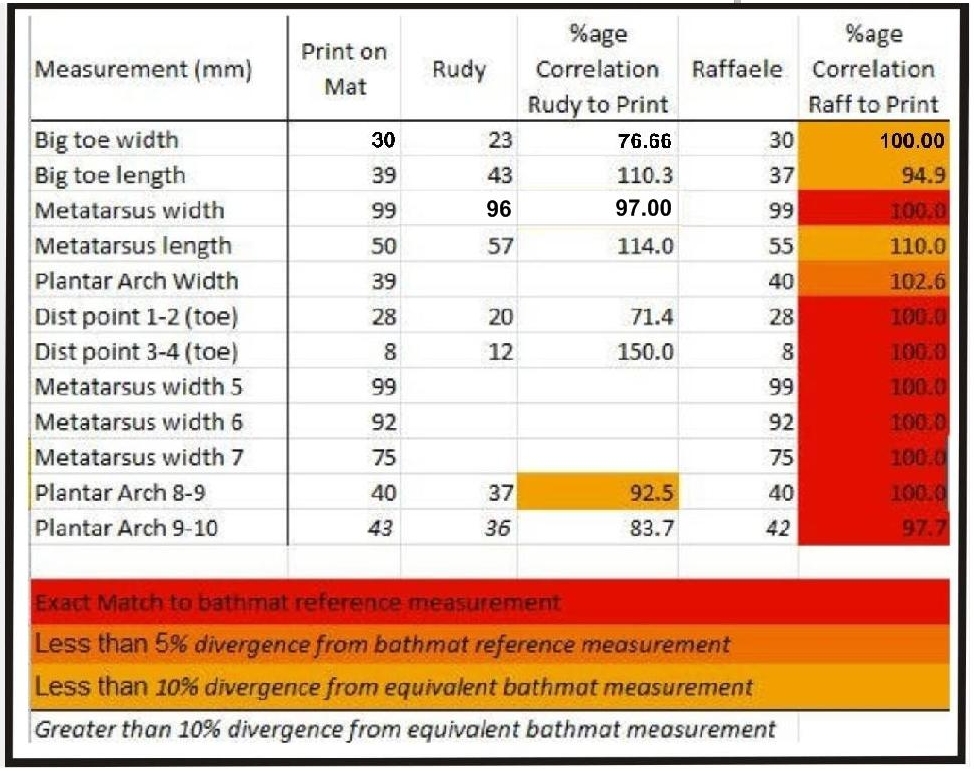
SomeAlibi’s post of a year ago
Comparison of measurements and analysis of correspondence degree of bathmat print, with both Guede’s and Sollecito’s sample prints.
Tuesday, October 22, 2013
The Meredith Case Wiki: A Highly Objective Summation Of The Case From Original Docs And Transcripts
Posted by James Raper
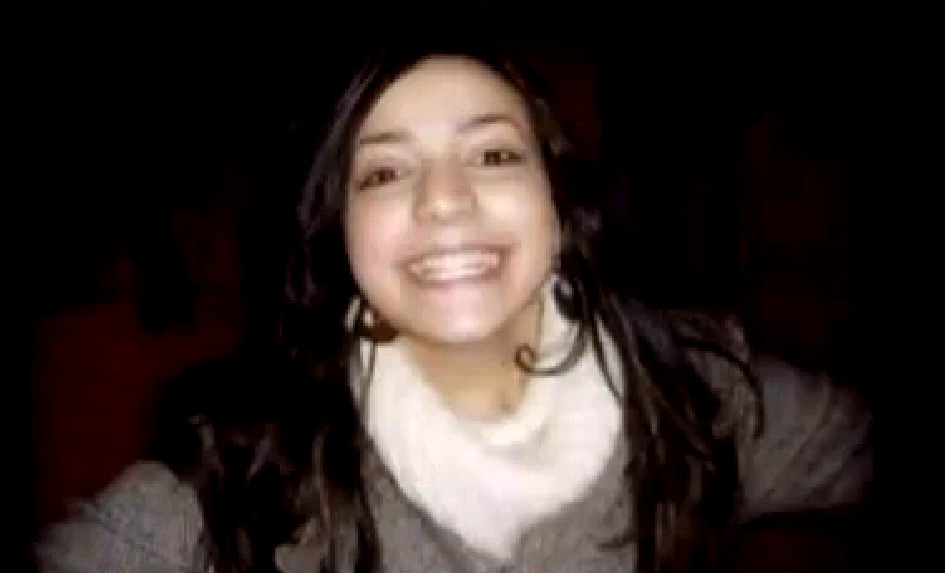
Some of our readers may not have noticed the new link to The Meredith Case Wiki to be found in the left hand column of this front page. I had not noticed it myself until recently.
This is an important link to a new website that is now a vital additional resource for those interested in understanding this case.
The website - The Murder of Meredith Kercher - is run by Edward McCall, with the assistance of other contributors, and TJMK is pleased to acknowledge and promote its distinctive and concise approach to presenting the facts of the case.
The site is modelled on the format of a page from the Wikipedia free encyclopedia. As with a Wiki page it is easily navigable. The data presented under the various headings is the consequence of much research but it still remains a work in progress. Wherever possible the material used is referenced in footnotes.
It starts on the Main page with a Mission Statement and an Introduction to the case. It then considers the evidence and has a good section entitled Myths Debunked.
The reader can easily access significant court documents: the Massei Report, the Hellmann Report, the Galati Appeal and the Supreme Court of Cassation Motivations Report. There is an accessibly summary of the Matteini and Micheli Reports.
In particular, for the researcher, there is a most welcome section entitled Court Transcripts. Here can be found transcripts of witness testimony from the Massei and Hellmann trials, experts reports, and the various writings and testimony of Amanda Knox, Raffaele Sollecito and Rudy Guede. At least that is to be the hope ultimately as there exist a good number of gaps at present.
Already some of the witness statements have been translated from Italian to English but there are a number of transcripts still to be translated. If there are any translators who would wish to help, please contact us and we shall be pleased to put your name forward.
McCall wishes to acknowledge the massive contribution made by True Justice for Meredith Kercher. TJMK has perforce grown organically and exponentially over the years and has accumulated a breadth and wealth of data, in-depth analysis and informed comment on the case which is unsurpassed on the internet, or indeed anywhere.
It will continue to do so and report developments until the conclusion of all aspects of the case.
Wednesday, July 24, 2013
How The Clean-Up And The Locked Door Contribute To The Very Strong Case For Guilt
Posted by James Raper
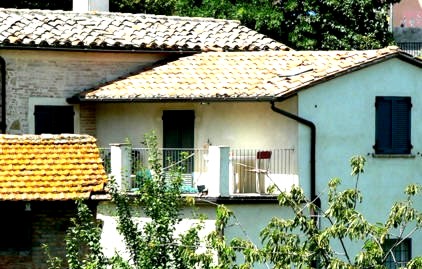
On the 30th September the appeals of Amanda Knox and Raffele Sollecito against the convictions they received at the first instance trial will resume, this time in Florence.
This follows the annulment by the Supreme Court of the acquittal verdicts rendered by the Appeal Court presided over by Judge Pratillo Hellmann. There is one conviction not under appeal. This is Knox’s conviction for calunnia, which is now definite.
They are therefore both currently convicted of murder and sexual assault, and a number of lesser charges, amongst which there is the simulation of a burglary “to ensure impunity for themselves from the felonies of murder and sexual assault, attempting to attribute the responsibility for them to persons unknown who penetrated the apartment to this end”.
There is one activity, for which there is evidence, with which they were not charged (perhaps either because it was redundant or not a criminal offence) though this was likewise to ensure impunity for themselves.
This is the partial clean up at the cottage and it is this with which I intend to deal. I want to highlight salient observations which have been under discussion here and elsewhere and some of which may be well known to readers, but perhaps some not, or have been forgotten about. Once again, in many cases, I am merely a conduit for the observations of others, not least the first instance trial judge Giancarlo Massei.
So let”˜s consider the observations and in doing so we can also throw some more light on the lone wolf theory.
1. Take a look at the bloody footprint
This is, of course, the bloody footprint on the bathmat in the small bathroom right next to Meredith’s room.
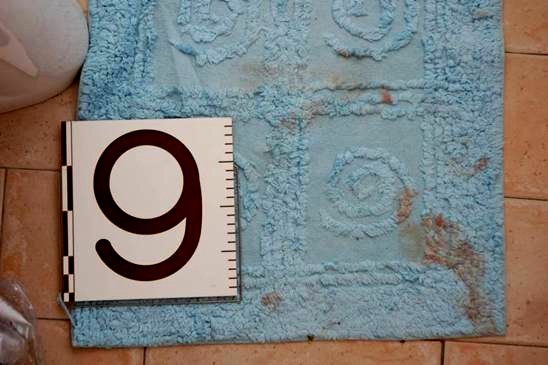
The heel of the right foot, if it had blood on it, is missing from where it should be on the tiled floor. It is difficult to imagine, given that the imprint of the foot on the mat is contiguous with the edge of the mat, that there was not at least some blood on the remainder of the foot such that there must have been at least some blood deposited on the floor.
Just as difficult to imagine that casual shuffling about on the bathmat would have removed the blood so as to render it “invisible” to the use of luminol.
Of equal relevance is that there were no connecting bloody footprints. Why not?
The defences have an improbable theory - that Guede, despite his homicidal rage, was smart enough to hop about on his left foot with a clean shoe on, and the other bare but covered in blood, and that having by this means entered the bathroom and washed his bloody right foot, disastrously leaving his (supposed) imprint there in the process, he then returned to Meredith’s bedroom inadvertently standing in blood with his left shoe and leaving with a trail of bloody left shoe prints - in which case the exercise of washing his foot was entirely in vain, on two counts, after all that careful hopping around.
Neither is it entirely clear why his right shoe came off in the first place.
It is far more probable that the inevitable bloody prints were deliberately and carefully removed. The reason for doing this was not just to conceal who would have made them (the print on the bathmat was, after all, left in situ) but, from a visual perspective, to conceal any blood that might be noticeable and alarming to anyone approaching Meredith’s room. Guede’s bloody shoeprints in the corridor were visible but only on close inspection.
2. Take a look at the bathroom door
Specifically the internal (hinge) side of the bathroom door. Take a look at this photograph.
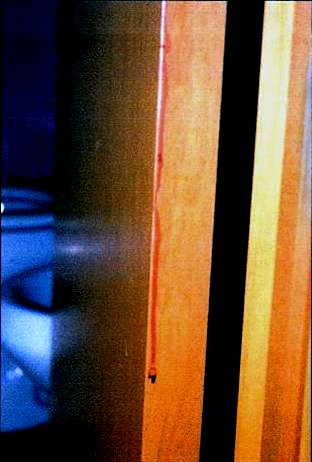
We see a long streak of dried blood. Clearly the blood has flowed some distance under the influence of gravity and we can see that it looks slightly diluted, with red corpuscles gathering towards the tip of the streak. A drip of that size does not appear from nowhere.
Indeed it is difficult to imagine how the blood got there unless it was part of a larger area of blood which most likely was on the face of the door and which was swiped to the right and over the edge of the face of the door. The cloth or towel used to do this was wet accounting for the slight dilution and length of the streak.
3. Take a look at Meredith’s door
It is interesting, is it not, that there is blood on the inside but not on the outside? The outside:
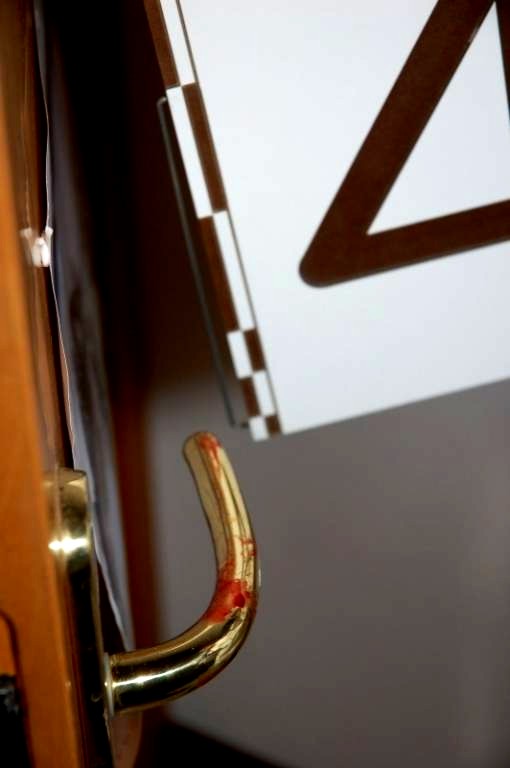
It is difficult to see how and why Guede touched the inside handle with a bloody hand (was it shut and if so, why?) and then closed the door to lock it without leaving a trace on the outside face of the door. Possibly he might have changed hands. The answer might also be that he visited the bathroom to wash his hand as well as his foot, save that none of his DNA was recovered from the spots and streaks of diluted blood in the washbasin, whereas Knox’s DNA was. All the more surprising given that Guede shed his DNA in Meredith’s room.
We see some blood on the edge of the door which again might be the remnant of a trace on the outside face.
4. Take a look at Amanda Knox’s lamp.
This was found inside Meredith’s room behind the door. Meredith also had a similar lamp which was resting on it’s base on the floor by her bedside table.
The presence and location of Knox’s lamp is obviously suspicious. Had Meredith borrowed Amanda’s lamp because her own was not working, then it would not have been in the position it was found but on or more likely knocked over and lying beside the bedside table since the violence appears to have been concentrated in that area of the room.
Had Meredith’s lamp been on the bedside table then likewise it too would most likely have been knocked over in her life and death struggle with her sole assailant (there are blood streaks on the wall just above) and it would not have ended up sitting upright on it’s base.
Both lamps were probably used to check the floor of Meredith’s room after the event and Knox’s lamp was probably sitting upright until it was knocked over by the door being forced open.
This is Meredith’s lamp by the bedside table.
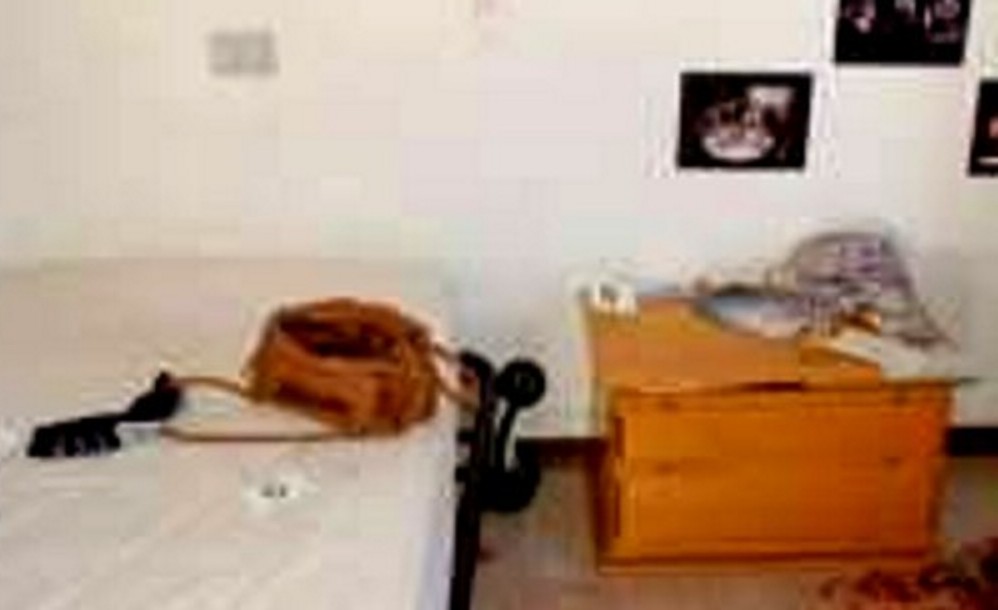
And this is Knox’s lamp by the foot of the bed.
5. Take a look at what luminol revealed
We can state with confidence that luminol (extremely sensitive to and typically used to identify blood that has been wiped or washed away) discovered :-
(a) three bare footprint attributable to Knox, one in her bedroom and two in the corridor, and
(b) two instances of the mixed DNA of Meredith and Knox, one in Filomena’s bedroom and one in the corridor.
(c) a footprint attributed to Sollecito in the corridor.
I have covered a number of elements strongly suggesting that there was at least a partial clean up, not of “invisible DNA” as the Groupies like to mock, but of what would have probably in some cases have been noticeable deposits of blood that would have attracted the eye of anyone entering the cottage and which would certainly have alarmed the observer as being difficult to explain.
Spots of and footprints in blood, not just in the bathroom but outside it, a locked bedroom door with blood on it, and a bathroom door with blood on it’s face.
We can include Knox as one such observer given her e-mail account of having allegedly stopped by the cottage to have a shower and collect some clothing before the discovery of the body. Such physical evidence - had it not been removed - would not have sat easy with that account, however dizzy and naïve Knox presents herself. One can envisage Knox thinking “sorted” - that her story would now work perfectly.
Even so, there were elements that were overlooked, such as Knox’s blood on the washbasin faucet and blood generally in the small bathroom, but a door can be closed and at least these were elements amenable to some form of explanation from her perspective, whether or not convincing, as occurred in the e-mail.
Incidentally in addition to the mixed traces in the small bathroom, Meredith’s blood was found on the light switch and a cotton bud box. I have a hard time imagining what Guede would have wanted with the cotton bud box, less so Amanda given her blood on the faucet, ear piercings and a scratch on her throat. Knox, when asked during her trial, could not recall having switched on the light during her alleged visit to the cottage.
6. Take a look at the items on Knox’s bed
Massei concluded that it was likely that it was Knox who carried out the clean up, which if correct might explain why it was not central to her thinking to dispose of the bathmat with Sollecito’s bloody footprint on it!
Knox was seen by Quintavalle at his store at 7.45 am on the 2nd November, thereby destroying her alibi. He described her as pale faced, exhausted looking, with pale blue eyes. He also added, and he would not have known this from photographs in the newspapers, that she was wearing blue jeans, a grey coat and a scarf, with a hat or cap of some sort.
We can see from the crime scene picture of Knox’s bedroom below, that such items (minus hat or cap) appear to be lying on her bed.
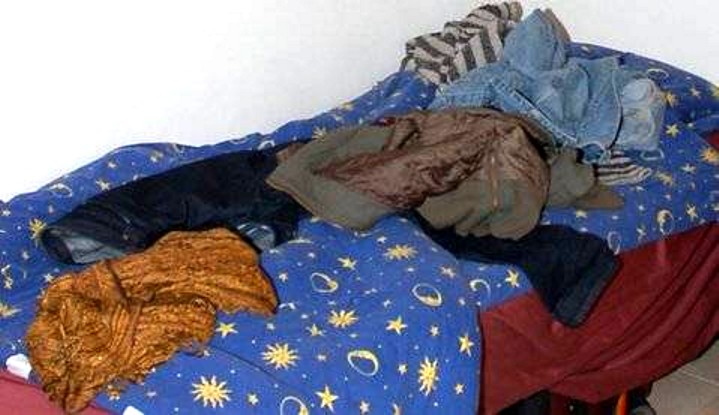
Sollecito did not accompany Knox to the store but this would be because he was known to Quintavalle whereas he was unfamiliar with her. He may however have accompanied Knox to the cottage and/or have acted as look out for her when she was there.
7. Some conclusions
I have included “The locked room” in the title because of a poster’s observation regarding Guede’s bloody left shoeprints exiting Meredith’s room. There is the simple observation that these footprints are going one way only and not towards the small bathroom. But they do not even turn to face Meredith’s door, and again hard to imagine that this could be so if it was Guede who locked her door!
We can rule out Guede as having been involved in any aspect of the clean up precisely because of that trail of footprints and other evidence of his presence left behind.
Now that the travesty of the Hellmann acquittals has been truly exposed Knox and Sollecito face an impossible uphill task.
The clean up and the locked door are just two of many elements in this case which combine together and corroborate each other in a manner that enables us to see the truth beyond a reasonable doubt.
Wednesday, May 01, 2013
A Welcome To New Arrivals #1: An Experienced Trial Lawyer Recommends How To Zero In On the Truth DRAFT
Posted by Some Alibi
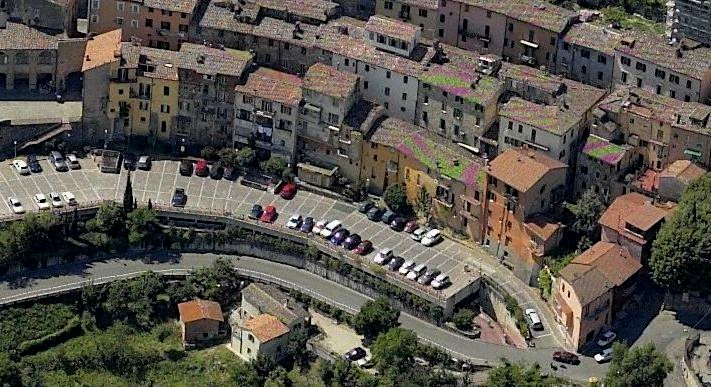
[Merediths window is seen on the top floor of the house in the lower foreground]
Welcome To Common Sense
This briefing was first posted with slightly different opening paras at the start of the annulled Hellmann appeal. New arrivals often tell us this helped them the most.
If you’ve come to this website because of the Amanda Knox book and interview, then welcome. Like all of us who come to this case, you have one key question: did they do it? The Knox book and interview seriously cherrypick the case, and perhaps haven’t helped you at all.
On the Internet, you will find people who are passionate in their defence of Amanda Knox and Raffaele Sollecito; and you will find people who are passionate in their support of an exceptionally talented girl who died, of a fine justice system previously untainted by PR, and of the prosecution’s very strong case.
Please click here for more
Monday, April 08, 2013
Experienced Trial Lawyer: There’s Far More Evidence Than UK/US Courts Need For Guilt
Posted by SomeAlibi
The false claim “there is no evidence”
Some amateur supporters of Knox and Sollecito have committed thousands of hours online to try and blur and obfuscate the facts of the case in front of the general public.
Their goal is simple: to create an overwhelming meme that there is “no evidence” against the accused, and thereby try to create a groundswell of support. Curt Knox and Edda Mellas and Ted Simon have all made this “no evidence” claim many times.
At least some some of the media have eagerly swallowed it.
The amateur PR flunkies make up myriad alternate versions of what created single points of evidence, often xenophobic scare stories designed to trigger emotional reactions, which they hope will be repeated often enough to become accepted as “the truth”.
And where things get really tricky, another time honored tactic is to go on at great length about irrelevant details, essentially to filibuster, in the hope that general observers will lose patience with trying to work it all out.
But time and again we have shown there is actually a great deal of evidence.
Evidence is the raw stuff of criminal cases. Let me speak here as a lawyer. Do you know how many evidence points are required to prove Guilt? One evidence point if it is definitive.
A definitive evidence point
If you’re new to this case or undecided, what is an easy example of ONE definitive evidence item that might stand alone? Might quickly, simply, and overwhelmingly convince you to invest more time into understanding the real evidence, not that distorted by the PR campaign?
In fact we have quite a choice. See the footprint which was second on that list.
Now see the table above. I recommend the use of this table of measurement to avoid the lengthy back and forward of narrative argument which so lends itself to obscuring the truth. I would like to present you with this single table of measurements to give you pause to question whether this line that there is “no evidence” is really true or whether it might be a crafted deception.
I present here a summarized view of critical evidence which suggests with devastating clarity that Raffaele Sollecito was present the night of the murder of Meredith Kercher. No lengthy text, no alternate versions, just measurements.
This FIRMLY places Sollecito in the very room where Meredith was attacked and killed.
In the small bathroom right next to Meredith’s bedroom was a bathmat. On it was found a bloody naked right footprint of someone walking straight towards the shower in the bathroom. The blood is that of Meredith.
The footprint is not Amanda Knox’s - it is too big - but we can compare it to the prints taken of Rudy Guede and Raffaele Sollecito.
In Judge Massei’s report the multiple measurements were detailed in the narrative over many sentences and, in that form, their immediate cumulative impact is less obvious. It is only by tabulating them, that we are forcefully hit by not one but two clear impressions:
The measurements are extremely highly correlated to the right foot of Raffaele Sollecito in twelve separate individual measurements. In themselves they would be enough for a verdict of guilt in all but a few court cases.
But they also show a manifest LACK of correlation to the right foot of Rudy Guede, the only other male in that cottage on the night. Have a look for yourself.
If you were the prosecution, or indeed the jury, and you saw these measurements of Raffaele’s foot versus the print, what would you think? Answer the question for yourself based on the evidence admitted to court.
Then, if you compare further, exactly how plausible do you find it that the measurements of the bloody imprint are Rudy Guede’s instead?
Not only are some of the individual measurements of Rudy’s imprint as much as 30% too small, but the relative proportions of length and breadth measurements are entirely wrong as well, both undershooting and overshooting by a large margin (70% to 150%).
Conclusions that must follow
Presented with those numbers, would you consider those measurements of Rudy Guede’s right foot to show any credible correlation to those of the footprint on the mat?
Supporters of the two have tried frantically to create smoke screen around this - the wrong technique was used they say (ruled not so by the court) / they are the wrong measurements (all 32 of them? that Raffaele’s are matching exactly or within a millimetre but Rudy’s are out by as much as -30% to +50%...?).
The severity of the impact on the defence is such that there was even a distorted photoshopped version circulated by online supporters of Raffaele and Amanda until they were caught out early on in coverage. But it is hopeless, because these are pure measurement taken against a scale that was presented in court and the data sits before you.
Have a look at the measurements and understand this was evidence presented in court. Whose foot do you think was in that bathroom that night? Rudy Guede? Or was it Raffaele Sollecito on twelve counts of measurement?
And if you find for the latter, you must consider very seriously what that tells you both about the idea there is “no evidence” in this case and who was in the cottage that night…
Monday, October 01, 2012
Testified That This CCTV Camera Probably Last Photographed Meredith Alive DRAFT
Posted by Peter Quennell
Put back at March 13 2009

Nick Pisa reporting from the trial on Sky News:
The Meredith Kercher murder trial has been shown CCTV footage of what the prosecution said was her arriving at home just hours before she died.
The grainy footage was taken from a car park camera overlooking the house where the British exchange student was found dead.
Other people were also in the images but police were not able to identify them, the Italian court heard. The jury was also shown CCTV images of officers arriving at the house after the murder.
It seems to have been similar to the CCTV footage in this video we posted where the camera is down at the intemediate level of the parking building.
This video will have been compressed for broadcast and the internet. The judges and jury would have been shown better-quality video directly from the camera.
Shots below show the entrance ramp to the upper level of the parking facility - the gate of the house is directly opposite - and the two CCTV cameras up there that record all arriving cars.
Meredith seems to have approached her house for the last time down the steps by the square in front of the School for Foreigners. Shown in the second-to-last shot below.
The bottom of the steps is a short distance behind our own camera in the three shots directly below.
Below: If you expand the image you can see the two CCTV cameras in this shot. It is the left camera that faces the gate of the house, and the famous intersection and dumpsters.
The trees in the background are in the park between the steps on this side of it (those that Meredith probably came down) and the School for Foreigners on the other side of it.
Below: Meredith seems to have approached her house for the last time down these steps by the square which is in front of the School for Foreigners about 100 meters off to the right.
Below: Meredith would have been about where the white car at back is to be caught on the CCTV camera maybe 20 meters to the right. The gate of her house is just beyond the car, and the steps down are off at hard right here and up behind.
Thursday, September 06, 2012
Dissecting The Hellmann Report #5: Their Obfuscation of Time of Death and Of Legal Blameworthiness
Posted by Cardiol MD
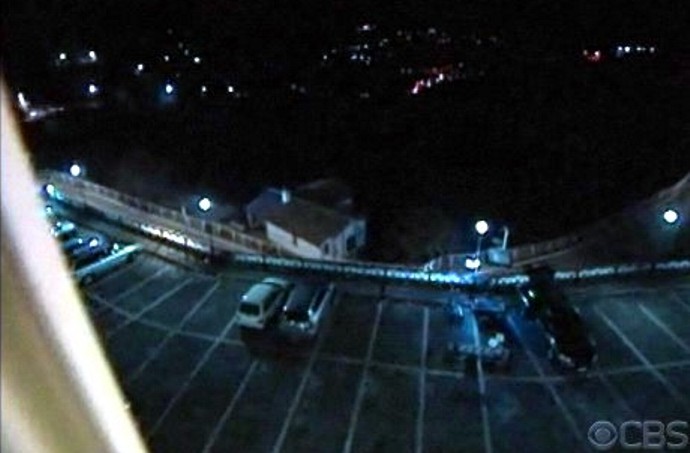
[View down on Meredith’s very well-lit house from the apartment above witness Madame Nara Capezzali’s]
Surreal Documentary Context
We have a very surreal situation on our hands. One perhaps without legal precedent. As previously in this series the legal document being analysed here is the Hellmann-Zanetti appeal report.
1) No main media in the US or UK have put that appeal report into English or done any serious legal analysis.
2) Nor have they translated the original trial report by Judge Massei or done any serious analysis of that.
3) Nor have they translated the tough and detailed appeal to the Supreme Court by the Chief Prosecutor of Umbria, Dr Galat, which was summarised and analysed by Yummi here. The meticulous PMF translation team should complete its translation soon.
4) None of the books on the case at present bring the legal developments up to the present or get into the details of the very tough Galati appeal.
Meanwhile the Knox and Sollecito teams are racing to get out their books in the US, with media interviews being scheduled, presumably in the hope that this vacuum of hard facts described above continues and they can fill it with their own kind of PR spin.
Of course none of this impinges on pending legal events in Italy where interested Italians have a radically different and more informed view. Except only to make sure everything is done correctly and firmly to the letter.
As usual, Knox and Sollecito are coming across as if they are on a different planet. Not one good lawyer seems to be explaining things to them, or even be of top of things for that matter.
On Hellmann-Zanetti on Time of Death
In this series, my previous posts explained the distortions and illogicalities in the Hellmann-Zanetti appeal report in the passages on the calunnia (false blaming of Patrick), witness Curatolo, and witness Quintavalle, and also the seeming prejudicial language used throughout.
Vital reading in advance of this post is Considering The Sad And Sensitive But Also Crucial Subject Of Meredith’s Time Of Death by my fellow lawyer James Raper.
He explained the difficulties of being precise about Meredith’s time of death, and he commented on Hellman-Zanetti as follows.
The first point to note here is that Hellmann misinterprets the first Court’s findings. He ignores the fact that the first Court did determine a TOD between 11pm and 11.30 pm as probable based on the pathology alone, and gave reasons for this.
None of the expert testimony is rehearsed, let alone re-evaluated by Hellmann. He proceeds merely to discredit the reliability of the witnesses as to the other elements such as the scream etc.
One recalls that Nara Capezzali says that she heard a scream sometime between 11 and 11.30 pm. That there was a broken down car and the breakdown driver came and went between perhaps 11 and 11.15 pm.
As mentioned earlier his hypothesizing about the other elements leads him to a TOD of not later than 10.13 pm although this time seems a very random one based on what he presents. He talks in this section about Guede’s statement that he arrived at the cottage at 9 pm.
One suspects that if Hellmann could have fixed the time of death at 9.15 pm or 9.30 pm then he would have done so as either time would be a get out of jail free card for Knox and Sollecito. He did not, but he got them out of jail nevertheless with his hypothesizing - here and elsewhere in his report.
So perhaps not surprisingly Dr Galati in his appeal to Cassation devotes nearly 3000 words to taking apart Hellmann-Zanetti’s arguments on Time of Death, under these 4 headings:
- Defect or manifest lack of logic in the sentencing report
- The intercepted chat [Guede on Skype]
- Meredith’s mobile phones
- The testimony of the three women [Capezzali, Monacchia, and Dramis]
Hellmann-Zanetti is politely but explicitly excoriated. In Dr Galati’s summarising of his own arguments he states this:
The claimed timing of the death of Meredith Kercher demonstrates a manifest illogicality in the reasoning, contains an unfounded assessment, and is manifestly in contrast with other court documentation of the case.
The internal and external inconsistencies of Hellmann’s statements on the topic constitute [yet another] violation of the Criminal Procedure Code.
Here are some examples of H/Z’s flood of reasons-to-doubt AK/RS’s guilt listed under Time of Death and not specifically mentioned in previous Dissections [my emphases]:
- Capezzalli “”¦was not able to pinpoint an exact time”¦”
- ”“¦the source of those [the scream and other] noises is not certain at all”¦.”
- ”“¦Monacchia’s testimony does not allow the time of the scream to be pinpointed at 11:30 PM, rather than at 11 PM or even before.”
- ”“¦she heard a loud scream of a woman, of which she could not however locate the source with certainty.”
- “The witness was not more accurate about the time, she could not connect it to objective data, but in her first testimony [verbale], when she presented herself to the investigators (the transcript of November 8, 2008 used for the indictment) she mentioned [aveva indicato] ʺ... at about 11 PMʺ. Monacchia’s statements therefore increase the ambiguity, as circumstantial evidence, of Capezzali’s statements instead of resolving it.”
- “Dramis, in fact, said that she went to sleep at around 11”11:30 PM, and that she woke up later (without being able, however, to specify how much later, while not excluding that it could have been 11:30 PM) due to the noise of quick footsteps, but she could not specify their direction, nor if they were produced by one or more persons, and she also noted that such events are not at all uncommon in this place”¦.. We find ourselves, therefore, confronting a piece of circumstantial evidence (scream and footsteps) [which is] extremely weak for its ambiguity, since it cannot even be placed with certainty in time.”
On Hellmann-Zanetti on Blameworthiness of Defendants.
As an example of a possible tendency under any legal system, Canadian law has already strayed-away on this subject, over a period of about nine years, and was only recently brought-back only by an Appellate ruling. So attempts to derail Italian law on this issue may be inevitable:
Canadian criminal law aims to maintain proportionality between the stigma and punishment attached to a conviction and the moral blameworthiness of an offender, in R v. Martineau (1990) the Supreme Court of Canada held that it is a principle of fundamental justice under sections 7 and 11(d) of the Canadian Charter of Rights and Freedoms that a conviction for murder requires proof beyond a reasonable doubt of a subjective foresight of death. In so doing, the court effectively declared sections 213 and 229(a)(i) and (ii) of the Criminal Code of Canada lacking in constitutional muster.[7]
Section 213(a) provided that a conviction for murder would lie for any killing that was “objectively foreseeable as a result of the abominable nature of the predicate crimes…inter alia…coupled with intentional infliction of bodily harm”.[7] . This largely equated with a Canadian form of felony murder, though it is technically closer to constructive murder in other jurisdictions.[8] .
Nevertheless s. 229(c), which provides for a form of constructive felony murder in situations where “an accused for an unlawful object did anything knowing that it was likely [on an objective standard] to cause someone’s death” is still operative, as confirmed in a 1999 appellate court decision”
Common-Law “˜Malice’ has historically required that an accused “knew, or ought to have known that the relevant act was wrong.”
In that “ought” lies an escape hatch.
What we believe as to the blameworthiness of these three offenders is obvious - they were committing a premeditated felony-sexual-assault using means which were foreseeably lethal, and actually were lethal.
Hellmann-Zanetti have already made clear what their blameworthiness opinion would be, although they have evaded reaching the issue by arguing reasonable doubt that two of the offenders were involved in Meredith’s murder, and deserve no blame for it whatsoever.
A legal issue which may eventually need to be addressed is whether a conviction for murder requires proof beyond a reasonable doubt using a subjective foreseeability of death standard or using an objective foreseeability of death standard.
If a subjective foresight of death were ever applied to a found-guilty AK & RS, they could plead that they just didn’t foresee that pricking Meredith’s neck with those knives could kill her; it was just a prank. For example “we were only hazing her; anyway, we were either mentally-ill or drugged or just plain dumb.”
If an objective foresight of death finding were ever applied to a found-guilty AK & RS, who were obviously committing a felonious assault using foreseeably lethal means, Meredith would get True Justice.
Tuesday, February 22, 2011
Open Questions: An Experienced Trial Lawyer Recommends How To Zero In On the Truth
Posted by SomeAlibi
Welcome
If you’ve come to this website because of the Lifetime movie of Meredith Kercher and Amanda Knox, then welcome.
Like all of us who come to this case, you have one key question: did they do it? The movie you’ve just watched is equivocal on that matter and perhaps didn’t help you at all.
On the internet, you will find people who are passionate in their defence of Amanda Knox and Raffaele Sollecito and you will find people who are passionate in their support of the prosecution.
My own arrival
Placing my own cards on the table here: as a twenty-plus year practising trial lawyer, I am firmly a part of that latter camp. But it wasn’t always that way.
It was information ““ evidence ““ that changed my views. What became very clear to me, early on, was that very few people in the English-speaking world are aware of anywhere near all of the evidence in this case.
I had thought I had grasped the core of the case, but I did not. The case is deep and complex and like many criminal cases, the complete facts behind it have been only sketchily reported in the media. The movie you may have just watched only skirts the real reasons the jury convicted.
The unanimous jury
I am sure that we all agree that no jury, in any murder case, given the awesome responsibility of adjudicating on (young) people’s lives for a multi-decade period of imprisonment, condemns people lightly.
It should be a matter of logic that the evidence presented against the accused must have been deep and satisfied the 6 lay jurors and 2 judges on the case for them to pronounce that huge judgement. That doesn’t mean that there couldn’t be the possibility of a mistrial, but clearly the evidence presented must have been substantial.
In this, we’ve already hit the first problem. Some supporters of Amanda Knox and Raffaele Sollecito will tell you there’s no evidence against them.
This is patently silly. No jury ever convicts people and sends them to prison for 24 plus years without being quite convinced of the case against them. Miscarriages of justice do happen, but the idea that there is “no evidence” can be summarily dismissed.
The only question is whether the evidence is sufficient, true and accurate.
The voluminous evidence
So is the evidence enough to convict beyond a reasonable doubt? The six lay jurors and two professional judges thought so, clearly. What you realise, when you come to the facts of the case, is that the evidence is based not around a single key event but on multiple points.
It can be astonishing to realise that the case is based not only on DNA evidence but also on cellphone evidence and computer records and further yet on multiple conflicting and contradicting versions of what happened that night from the mouths of the accused, not to mention falsely accusing an innocent man of responsibility for murder causing his incarceration.
The wealth of evidence is actually extremely unusual. It goes way beyond the quite similar Scott Peterson case.
The Massei Sentencing Report
What is absolutely new to the English speaking legal world is that the reasoning for the conviction can be read in an extremely detailed 440+ page report online. Bilingual posters at the Perugia Murder File Forum many of whom who are also key posters at TJMK translated the entire document into English over several months last year.
It was my privilege to play an extremely small part in that work. People from four different continents with backgrounds in forensic science, law, academia and a host of other disciplines participated.
You can read an effective executive summary by clicking on the Massei Report link at top here and reading the conclusions from page 388 onwards:
The Knox PR campaign
If you are new to this case, you will likely be shocked how much evidence there is against the convicted parties. Amanda Knox’s family have spent over $1m and involved a professional PR agency called Gogerty Marriot to suggest otherwise in the English-speaking media.
You might wonder why an innocent person needs a million dollar PR campaign on their part. Make yourself a coffee and read the conclusions of the judge’s report. It will take you about 15 minutes. Up until you read this report, almost everything you watch, hear and read is PR spin and is quite deliberately positioned to make you believe there is no case.
When you complete it, I believe you will have a very different take. That 15 minutes could change your ideas about everything you thought you knew about the murder of Meredith Kercher.
Now for a quick tour of the evidence.
Some of the points of evidence
Consider as you read it what is your own possible explanation for each of the following:
- the fact that the wound pattern and the reconstruction of the attack, each presented at trial in extensive closed-court sessions, showed this absolutely had to be a pack attack;
- the DNA of Raffaele Sollecito on Meredith’s bra-clasp in her locked bedroom;
- the almost-entire naked footprint of Raffaele on a bathmat that in *no way* fits that of the other male in this case - Rudy Guede;
- the fact that Raffaele’s own father blew their alibi that they were together in Raffaele’s flat at the time of the killing with indisputable telephone records;
- the DNA of Meredith Kercher on the knife in Raffaele’s flat which Raffaele himself sought to explain as having been from accidentally “pricking” Meredith’s hand in his written diary despite the fact Meredith had never been to his flat (confirmed by Amanda Knox);
- the correlation of where Meredith’s phones were found to the location of Raffaele Sollecito and Rudy Guedes’s flats;
- the computer records which show that no-one was at Raffaele’s computer during the time of the murder despite him claiming he was using that computer;
- Amanda’s DNA mixed with Meredith Kercher’s in five different places just feet from Meredith’s body;
- the utterly inexplicable computer records the morning after the murder starting at 5.32 am and including multiple file creations and interactions thereafter all during a time that Raffaele and Amanda insist they were asleep until 10.30am;
- the separate witnesses who testified on oath that Amanda and Raffaele were at the square 40 metres from the girls’ cottage on the evening of the murder and the fact that Amanda was seen at a convenience store at 7.45am the next morning, again while she said she was in bed;
- the accusation of a completely innocent man by Amanda Knox again and again when under no pressure which she insisted on putting in writing;
- the fact of Knox’s claim that she was aggressively interrogated for days, although she did not even have the status of a witness, and signed every page of every typed record of her mild, mundane and quite limited questionings;
- the fact that during Knox’s very unconvincing performance on the witness stand in July 2009 she admitted she was treated well and was not abused;
- the fact that when Amanda Knox rang Meredith’s mobile telephones, ostensibly to check on the “missing” Meredith, she did so for just three seconds - registering the call but making no effort to allow the phone to be answered in the real world
- the knife-fetish of Raffaele Sollecito, and his formal disciplinary punishment for watching animal porn at his university so far from the wholesome image portrayed;
- the fact that claimed multi-year kick-boxer Raffaele apparently couldn’t break down a flimsy door to Meredith’s room when he and Amanda were at the flat the morning after the murder but the first people in the flat with the police who weren’t martial artists could;
- the extensive hard drug use of Sollecito as told on by Amanda Knox;
- the fact that Amanda knew details of the body and the wounds despite not being in line of sight of the body when it was discovered;
- the lies of Knox on the witness stand in July 2009 about how their drug intake that night (“one joint”) is totally contradicted by Sollecito’s own contemporaneous diary;
- the fact that after a late evening’s questioning, Knox wrote a 2,900 word email home which painstakingly details what she said happened that evening and the morning after that looks *highly* like someone committing to memory, at 3.30 in the morning, an extensive alibi;
- the fact that both Amanda and Raffaele both said they would give up smoking dope for life in their prison diaries despite having apparently nothing to regret;
- the fact that when Rudy Guede was arrested, Raffaele Sollecito didn’t celebrate the “true” perpetrator being arrested (which surely would have seen him released) but worried in his diary that a man whom he said he didn’t know would “make up strange things” about him despite him just being one person in a city of over 160,000 people;
- the fact that both an occupant of the cottage and the police instantly recognised the cottage had not been burgled but had been the subject of a staged break-in where glass was *on top* of apparently disturbed clothes;
- the fact that Knox and Sollecito have feuded quite publicly ever since November 2007 and have shown far more anger toward one another than either has ever shown toward Guede;
- the fact that Knox and Sollecito both suggested each other might have committed the crime and Sollecito TO THIS DATE does not agree Knox stayed in his flat all the night in question;
- the fact of the bizarre behaviour of both of them for days after the crime;
- the fact that cellphone records show Knox did not stay in Sollecito’s flat but had left the flat at a time which is completely coincidental with Guede’s corroborated presence near the girl’s flat earlier in the evening;
- the fact that Amanda Knox’s table lamp was found in the locked room of Meredith Kercher in a position that suggested it had been used to examine for fine details of the murder scene in a clean up;
- the unbelievable series of changing stories made up by the defendants after their versions became challenged;
- Knox’s inexplicable reaction to being shown the knife drawer at the girl’s cottage where she ended up physically shaking and hitting her head despite being joyful earlier at the police station.
In conclusion
This list is not exhaustive. It goes”¦ on”¦ and on”¦ and on”¦ And yet, those supporting Knox will tell you that’s all made up, all coincidental.
Really? Does the weight of all that evidence sound made up to you?
If so, it must be the most over-rigged criminal case in the history of crime. Unlikely beyond all and any reasonable doubt.
The judge’s report explains why the jury found the defendants guilty. I truly expect you will be astonished at the amount of evidence if all you’ve done is watched a film or read a few press reports.
For any questions thereafter, please join us and post them on truejustice.org or perugiamuderfile.org . You’ll find here a host of good people who are all working on a totally volunteer basis in memory of the only victim of this crime.
Meredith Susanna Cara Kercher. RIP.
Tuesday, February 01, 2011
Explaining The Massei Report: A Visual Guide To The Faked Break-In Via Filomena’s Window
Posted by pat az
1. Post Overview
Cross-posted from my own website on Meredith’s case at the kind invitation of TJMK.
The Massei Report on the trial and sentencing of Amanda Knox and Raffaele Sollecito looks into whether or not a break-in is supported by the evidence available in the room with the broken window.
It concludes that the broken window and room in disarray - Filomena’s bedroom - are an “artificial representation”, ie. that the break-in was faked. After seven pages of review of the evidence, the Massei Report states:
“the situation of disorder in Romanelli’s room and the breaking of the window pane constitute an artificial representation created in order to orient the investigations towards a person who, not having the key to the front door, was supposed to have entered through the previously broken window and then effected the violent acts on Meredith which caused her death.
What follows is a look at the comments in the Massei report compared with crime scene and other photos. All quotes are from the English translation prepared by unpaid volunteers at PerugiaMurderFile.org. The section on the scenes in the bedroom begins on page 47 and continues to page 55. Some sentences in the paragraphs below have been omitted for brevity, and can be read in full in the original.
2. Knox Finds The Scene
Then (Amanda) went into another room and noticed that the window had been broken and that there was glass inside. She told these things to her and the other girls present. Then she related that she had gone back to Raffaele’s house and had rung Filomena.
I)n one of the telephone calls to Romanelli, Amanda spoke of that smashed window and of the possibility that someone could have entered the house through the broken place; she said this also in the telephone call to 112 and in the first declarations to the Postal Police.
Also in the e-mail of November 4, 2007, sent by Amanda to 25 people in the US, she hypothesises that a burglar could have entered the house and says she looked around to see if anything was missing.
Filomena Romanelli, disturbed by this phone call, had rung Amanda back without receiving a reply and when, a little later, she had succeeded in speaking to Amanda, Amanda had told her that in her room (i.e., in Ms. Romanelli’s room) the windowpane was broken, everything was in a mess, and that she should come back home.
Filomena Romanelli had ascertained from a quick check of her room, even though (it was) in a complete mess with the windowpane broken, that nothing was missing.
It must be held that when Filomena Romanelli left the house in via della Pergola, she had pulled the [interior] shutters towards the interior of her room, although she did not think that she had actually closed them; furthermore, because they were old and the wood had swelled a bit, they rubbed on the windowsill; to pull them towards the room it was necessary to use some force (“they rubbed on the windowsill”); but in this way, once they had been pulled in, as Romanelli remembered doing, they remained well closed by the pressure of the swelled wood against the windowsill.
It cannot be assumed - as the Defence Consultant did - that the [interior] shutters were left completely open, since this contradicts the declarations of Romanelli, which appear to be detailed and entirely likely, considering that she was actually leaving for the holiday and had some things of value in her room; already she did not feel quite safe because window-frames were in wood without any grille.
Also, the circumstance of the [interior] shutters being wide open does not correspond to their position when they were found and described by witnesses on November 2, and photographed (cf. photo 11 already mentioned).
Now, for a rock to have been able to break the glass of the window without shattering the outside shutters, it would have been necessary to remove the obstacle of the shutters by opening them up.
Consequently, since the shutters had been pulled together and their rubbing put pressure on the windowsill on which they rested, it would have first been necessary to effect an operation with the specific goal of completely opening these shutters.
The failure to find any instrument suitable for making such an opening (one cannot even see what type of instrument could be used to this end) leads one to assume that the wall would have to have been scaled a first time in order to effect the complete opening of the shutters, in order to enable the burglar to aim at the window and smash it by throwing a large stone - the one found in Romanelli’s room.
He would then have to have returned underneath Romanelli’s window for the second climb, and through the broken glass, open the window (balanced on his knees or feet on the outside part of the windowsill), otherwise he would not have been able to pass his arm through the hole in the glass made by the stone) and reach up to the latch that fastened the window casements, necessarily latched since otherwise, if the casements had not been latched, it would not have been necessary to throw a rock at all, but just to open the shutters and climb inside.
The “climber” would also need to rely on the fact that the [interior] shutters were not actually latched, and also that the “scuri” ]blackout blind] had not been fastened to the window-frame to which the broken pane was attached; otherwise it would not have been possible to open them from the outside; nor would it have been possible, even breaking the glass, to make a hole giving access to the house, since if these inner panels had been closed, they would have continued to provide an adequate obstacle to the possibility of opening the window, in spite of the broken pane.
This scenario appears totally unlikely, given the effort involved (going twice underneath the window, going up to throw the stone, scaling the wall twice) and taking into account the uncertainty of success (having to count on the two favourable circumstances indicated above), with a repetition of movements and behaviours, all of which could easily be seen by anyone who happened to be passing by on the street or actually coming into the house.
But beyond these considerations, there are other elements which tend to exclude the possibility that a burglar could have entered the house through the window of Romanelli’s room.The double climb necessary to attain the height of three and a half metres would have left some kind of trace or imprint on the wall, especially on the points on the wall that the “climber” would have used to support his feet, all the more as both the witnesses Romanelli and Marco Zaroli gave statements indicating that the earth, on that early November evening, must have been very wet (..6) (p50)
In fact, there are no visible signs on the wall, and furthermore, it can be observed that the nail ““ this was noted by this Court of Assizes during the inspection ““ remained where it was: it seems very unlikely that the climber, given the position of that nail and its characteristics, visible in the photo 11, did not somehow “encounter” that nail and force it, inadvertently or by using it as a foothold, causing it to fall or at least bend it. (p50)
The next fact to consider is that the pieces of glass from the broken pane were distributed in a homogeneous manner on the inside and outside parts of the windowsill, without any displacement being noted or any piece of glass being found on the ground underneath the window.
This circumstance, as confirmed also by the consultant Pasquali, tends to exclude the possibility that the rock was thrown from outside the house to create access to the house through the window after the breaking of the pane. The climber, in leaning his hands and then his feet or knees on the windowsill, would have caused at least some piece of glass to fall, or at least would have been obliged to shift some pieces of glass in order to avoid being wounded by them.
Instead, no piece of glass was found under the window, and no sign of any wound was seen on the pieces of glass found in Romanelli’s room. It can moreover be observed that the presence of many pieces of glass on the outside part of the windowsill increases the probability of finding some small pieces of glass on the ground underneath, since there seems to be no reason that so many pieces of glass would all stop just at the edge of the windowsill without any of them flying beyond the edge and falling down to the garden below. (p51 & 52)
On this subject it is also useful to recall that at the hearing of April 23, 2009, the witness Gioia Brocci mentioned above declared that she had observed the exterior of the house, paying particular attention to the wall underneath the window with the broken pane, the window of the room then occupied by Filomena Romanelli.
She said: “We observed both the wall”¦underneath the window and all of the vegetation underneath the window, and we noted that there were no traces on the wall, no traces of earth, of grass, nothing, no streaks, nothing at all, and none [39] of the vegetation underneath the window appeared to have been trampled; nothing” (p. 142 declarations of Gioia Brocci). (51)
This situation, like all the other glaring inconsistencies, is adequately and satisfactorily explained if one supposes that the rock was thrown from the inside of the room, with the two shutters pulled inwards so that they blocked the pieces of glass from falling to the ground below. Once the glass had been broken from inside, the rock was set down at some place in the room, and the shutters were pushed towards the outside, being thus opened from within the room. (p51)
But the fact that all this was in fact just a simulation, a staging, can be deduced from further circumstances. From the photos taken by the personnel of the Questura (photos 47 to 54 and 65 to 66) one can perceive an activity which appears to have been performed with the goal of creating a situation of obvious disorder in Romanelli’s room, but does not appear to be the result of actual ransacking, true searching for the kind of valuable objects that might tempt a burglar.
The drawers of the little dresser next to the bed were not even opened (photo 51 and declarations of Battistelli who noted that Romanelli was the one who opened the drawers, having found them closed and with no sign of having been rifled: see p. 66 of Battistelli’s declarations, hearing of Feb. 6, 2009).
The objects on the shelves in photo 52 appear not to have been touched at all; piles of clothes seem to have been thrown down from the closet (photo 54) but it does not seem that there was any serious search in the closet, in which some clothes and some boxes remained in place without showing any signs of an actual search for valuable items that might have been there (photo 54).
It does not appear that the boxes on the table were opened (photo 65) in a search for valuable items. And indeed, no valuable item (cf. declarations of Romanelli) was taken, or even set aside to be taken, by the ““ at this point we can say phantom ““ burglar.
What has been explained up to now thus leads to the assertion that the situation of disorder in Romanelli’s room and the breaking of the window pane constitute an artificial representation created in order to orient the investigations towards a person who, not having the key to the front door, was supposed to have entered through the previously broken window and then effected the violent acts on Meredith which caused her death.
Footnotes
(...1) The Massei Report in English is readable and downloadable via the link at the top of this page.
(..2) The consultant for the defence actually assumed that this had been done; in his exhibit, he assumed that the shutters were not present in front of the window
(..3): “if the shutters were closed, he could not have passed through, that is obvious”, cf. declarations of the consultant for the defence, Sergeant Francesco Pasquali, p. 22 hearing July 3, 2009.
(..4): (the window in Romanelli’s room is located at a height of more than three and a half metres from the ground underneath, cf. photo 11 from the relevant dossier)
(..5):,which are the wooden panels [scuri=non-louvered shutters in interior of room] that usually constitute the outer side (or the inner, depending on the point of view) of the window [attached to the outer edge of the inner side of the window-frame]
Tuesday, May 25, 2010
The Chilling Killing Propensities Of Sollecito’s Various Knives
Posted by SomeAlibi
The few rather puerile websites trying to make the case that Knox and Sollecito were framed all have this one thing in common.
They are all of them a mile or more wide on the facts of the evidence - but only a millimeter or so deep.
Time and again on some point of evidence TJMK and PMF have gone far, far deeper than they have - and from then on, on that particular point, deafening silence is quite usual. Here is one very good example, on TJMK, highly incriminating in itself, and highly suggestive of when and how Edda Mellas first realised her daughter was guilty.
On that point of hard evidence, almost enough to incriminate Amanda all by itself, there has never been any real comeback. The PR campaign’s Wizard of Oz moves on.
Now we advance another in-depth analysis. This time it focuses on the really deadly nature of Sollecito’s various knives, and we’ll await the comeback if any with interest.
In effect, the deniers’ argument made is that Sollecito is not a collector or an aficionado, just a young man who might need to cut an apple with a pocket-knife. And he’s certainly not a hardcore knife collector, collecting fantasy-wish-list knives.
Carrying a pocket-knife above a certain size in public is illegal in Italy. But ignoring that technicality for a minute, let’s examine the knives of Raffaele Sollecito which were impounded during his arrest. Three knives, moving up in degrees of interest, not counting the very large knife prosecution witnesses identified as the murder weapon.
Knife Three
Take a look at the image up the top here. This knife actually hung above Sollecito’s bed.
It is a replica combat knife. The heavy t-bar protection is designed to protect the hand of the knife-user from slipping onto the blade when being used to stab another person, as well as to protect the user against another blade.
Blood grooves exist for only one purpose - as they imply, they are there for when one stabs someone deeply with the knife: they allow the blood to run out down the grooves. This breaks the seal and suction of the enclosing wound around the blade which makes the knife far easier to withdraw
That knife is specifically designed for stabbing people as well as cutting sentries’ throats etc. The female arm in the picture is Amanda’s by the way (you can find the zoomed-out version showing all of Amanda in the PMF gallery), as it was taken when she was being shown the knife in court.
She must have recognized it, of course, since it was from Raffaele’s bedroom, and would have been a rather noticeable discussion piece within view whenever Knox was in the room or laying on the bed.
Many teenagers and young adults put the objects of their highest interest and infatuation, from bands to film-stars, on their walls. Raffaele chose to put a knife designed for killing people on his wall.
It would be a lurking and incongruous presence on a small student-sized bedroom wall in the minds of the vast majority of people. The question of Raffaele’s degree of attraction to knives such that he actively chose to mount a replica combat knife on his bedroom wall doesn’t appear to need much further discussion.
And yet, it’s actually only less than a third of the equation as it was only a replica. Now let’s turn to two real knives - his so-proclaimed pocket knives - which Raffaele confirmed in his own words that he carried on him every day for years, and which tell a more subtle and deeper story.
First, consider what is the meaning of a pocket knife to you.
The phrase “˜pocket knife’ has been translated from the Italian from the transcripts / press coverage. For many, including myself, this will have conjured a mental image of a Swiss Army type knife or a simple blade and indeed this is the prevalent definition of a conventional pocket knife.
Let’s actually have a look at Raffaele’s “pocket knives” courtesy of pictures posted by poster Jools on PMF. These knives were impounded, one from the apartment and one, unbelievably, from Raffaele’s person at the Questura.
In the case of the latter, even Raffaele saw this as a devastating “own-goal” as we can read from his diary entry of 7 November 2007; “I’m not even able to offer guilt, given my deep fu**ing stupidity for the fact that I smoke cannabis I even forget what I have eaten and also for that I carry behind a knife to nock the tables and the trees and I carry it so often that I brought it also to the police headquarters.”
Knife Two
This is a 2.9 inch blade drop point, near spear point knife. At first glance (apart from the mark on the clip which should be ignored and was benign), the deniers camp might say “Well, look at it - it’s just a pocket knife even if it looks a bit sharp and so on ““ look, it’s even got a cute clip for the pocket, like on a pen.”
Let’s start there. The clip is actually a reversible one ““ it can be taken off and re-screwed to the knife to the user’s side / orientation of preference. This is already a proper knife rather than a cheap shop pick-up.
More obviously, the half-serrated edge to the blade for cutting is an active design (and purchase) feature.
Third, the “˜grind’ on the top the blade shows an aesthetic sensibility to the design but also serves a functional purpose for a cutting or stabbing use in terms of reducing friction.
Fourth, the serrations or (quite aggressive) “˜jimping’ on the top of the handle, just behind the blade are there to provide thumb grip.
Quite a lot of design features on this knife for a casual “pocket knife” one might think.
Which leaves us with the odd bar code thing at the top edge of the blade and the indistinct logo on the blade. Let’s see what that logo is with a little enhancing;
“˜Brian Tighe Design’. Brian Tighe?? Google sets us straight on who he is.
“You’d need a calculator to count the number of custom knife-makers who have jumped into the tactical fray over the past five years. You can tally the cream of the crop on two hands, being sure to earmark one of those digits for knifemaker Brian Tighe. In a matter of just a couple of years Tighe (pronounced “Tie”) has risen from the rank and file of edged weapons artisans to the rarefied air of the top 10 elite.”
A look at Tighe’s site shows that his own company’s knives sell for 500 dollars and up. He is a globally feted knife designer whose wait list for his knives was as high as seven years at one point.
So the design of the knife here is actually that of a noted master knife maker. Almost something one might collect, one might say. As loaded as Papa Doc Sollecito is, did Raffaele really spend over 500 dollars on such a knife?
Well no, actually, he didnt need to. This is a Columbia River Knife & Tool produced 811x series knife bearing Brian Tighe’s name. CRKT are a dedicated knife company who specialise in working with the world’s leading knife designers and producing the knives for a bigger market but still as proper aficionado pieces.
At this level of knife, there are extensive magazine, web and “˜user’ reviews. Knives like this are tested for resilience and sharpness including things like edge-on paper-cut tests where paper is cut through just like a razor from the side of a piece of paper held by one hand.
Such a knife is able to catch the edge of the paper and then slice straight through the width of the paper side-on without any tension in the paper. That’s what a knife like this is capable of. A “pocket knife” to me sounds like something picked up for 10 or 20 euro. The current model that replaced Raffaele’s now out-of-series model sells for about $80 at retail. Here’s the actual 2004 model that Raffaele had i.e. the same as the one above;
Worth looking at that for a second or two… Oh the bar code? It’s not a bar code, it a rectangular thumb stud you flick the knife open with. When you do, the knife goes to a locked position unlike many “pocket-knives”. In English speaking knife circles, these knives are not generally referred to as pocket-knives but are called “Tactical Knives” which are a cross-over of usage knives for outdoors / cutting etc but also for personal “protection”.
So, in addition to the wall-mounted replica combat knife, one of Raffaele’s daily carries (see diary / testimony) was a designer thumb-flicked locking tactical knife with jimping, top blade grind, switchable clip and a razor sharp edge costing about 80 bucks. That you can only carry in your pocket. Illegally. Some apple-cutter.
Let’s take a look now at the most worrying knife of all…
Knife One
At first glimpse, this “pocket knife” looks quite martial arts like, given the hole and the weird top edge of the blade and the spider logo.
The logo marks this as a Spyderco knife ““ a large premium knife manufacturer of tactical and many other types of knives. This particular model is a Delica4 Emerson Opener retailing for about $109.95rrp. Of particular note about this knife is the hole and the top edge. The hole, a Spyderco feature, allows a thumb to flick the blade open very quickly. This knife is about speed.
But actually the thumb hole is not the real speed feature ““ that is reserved for the top edge curl.
This is a truly specialist feature known as an Emerson Opener or “wave”. The idea is that the curl in metal catches on the edge of a pocket edge on drawing the knife and opens it immediately (see videos below).
This is a speciality feature licensed from Emerson knives ““ Emerson being another feted “˜name’ knife designer. The wave is only present on two of Spyderco’s 330 knives listed on their website ““ the Delica and the ¾ inch larger sister knife the Endura (“the best self defence knife in the world” according to one enthusiastic teenager on youtube). That’s how specialist it is.
The job of the wave feature is to provide the fastest opening knife in the world bar none ““ faster than a flick or spring knife in fact. This video (many similar to be found) gives a rather disturbing insight into what the real attraction of owning this knife is to a hardcore knife knut like Raffaele; (remember when you watch this for the first time that the knife is closed inside that pocket and also enable the sound on the embedded player below by clicking off the mute)
If I thought my son had a penknife, but then actually saw him with this, we would be having a very long chat..
“Enough!” the deniers say?! “You’ve still got it in for Raffaele haven’t you?” they say?! Despite the replica combat knife on the bedroom wall, the designer Brian Tighe Design CRKT drop-point and the Spyderco Delica4 with wave design)? “You’ve used prejudicial phrases like “hardcore knife knut” haven’t you?” they say?!
Sorry, but don’t look at me. They’re not my words.
They’re the words of Spyderco itself on its own webpage. See here and below.
Raffaele was out to impress Amanda and by his own admission both obsessive about her and a hardcore stoner. He also thought knives - proper knives with exclusive features by name knife designers not pocket knives were fascinating.
As with all of this case and any case, you REALLY need to look at the detailed evidence.
The overwhelming prevalence of skin-deep level of analysis / downplaying of this case by much of the deniers camp will lend and always has lent itself to people dismissing serious evidence as inconsequential based on their lack of understanding of what actually is in question.
The “mere pocket-knife” impression of Raffaele’s interest in knives is a clear case in hand. Raffaele’s father testified in court that his son carried a pen-knife. Some pen-knives or pocket-knives these really were…
As always with this case, when you take the time to look at the real detail, the reality you find is something far more disturbing…..

